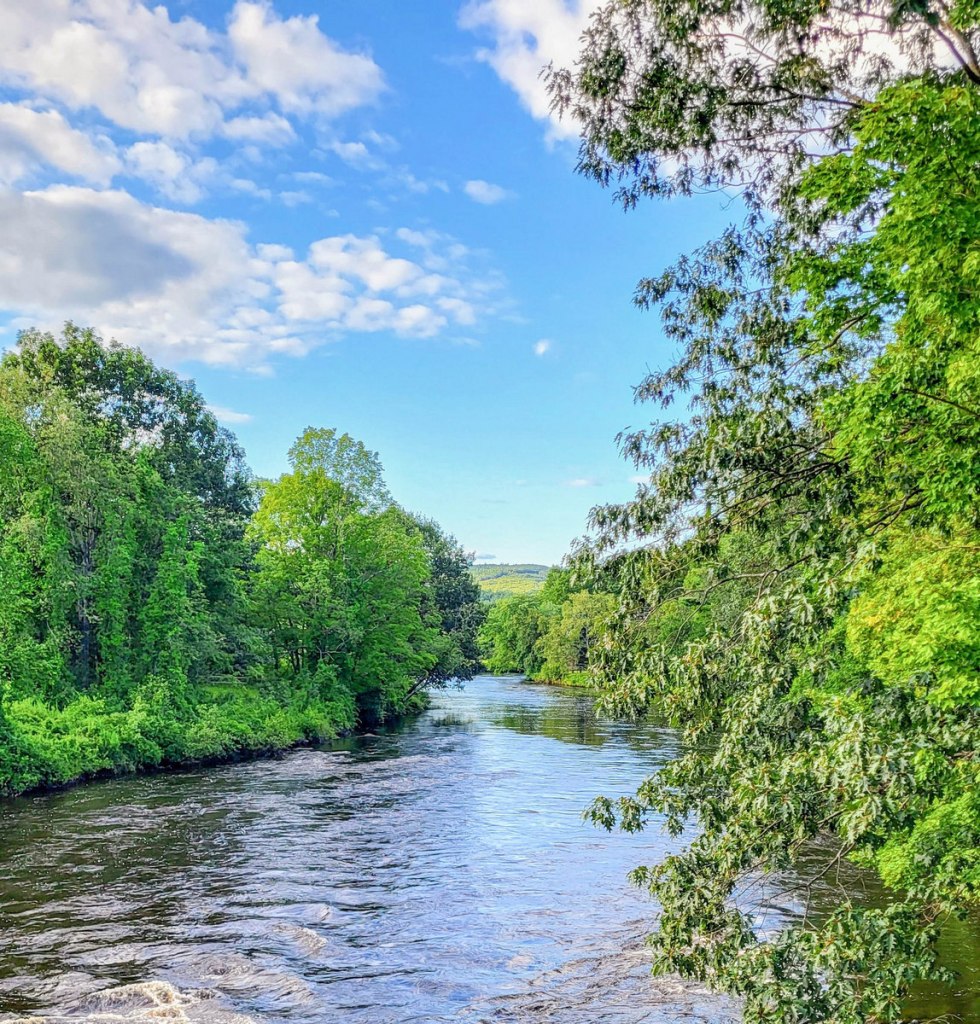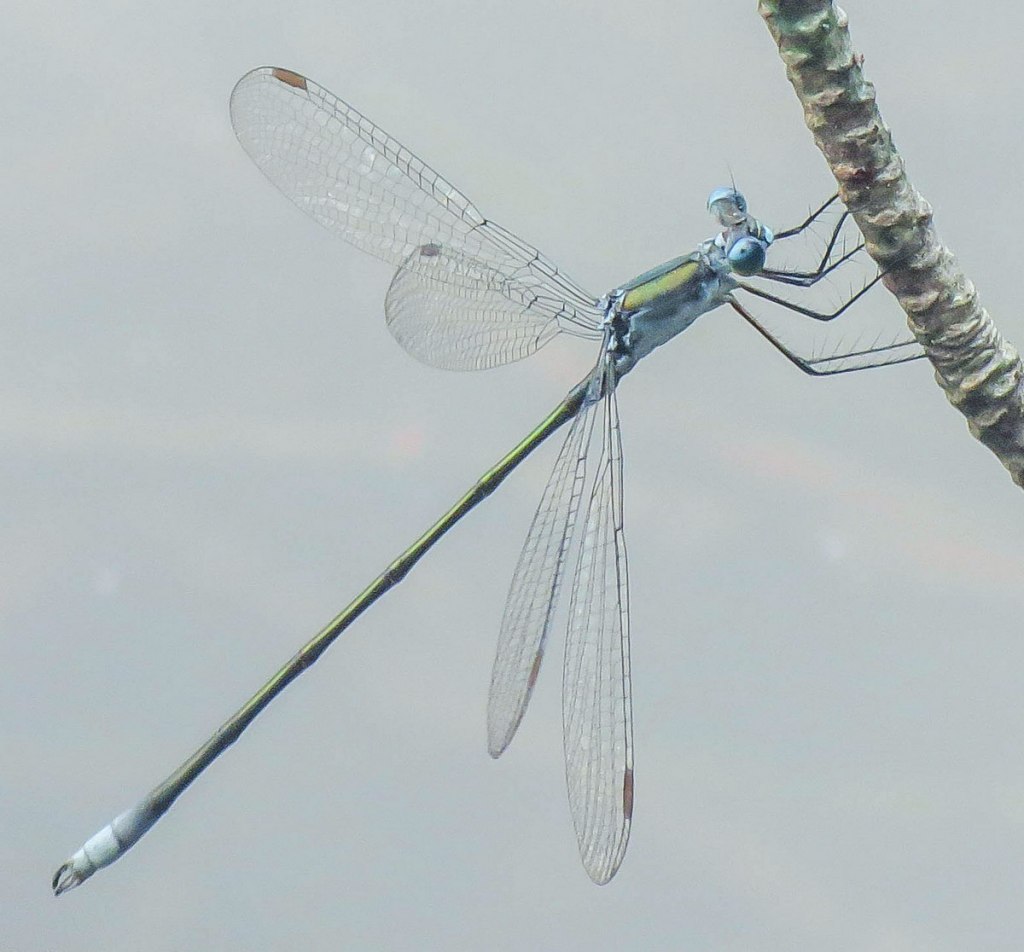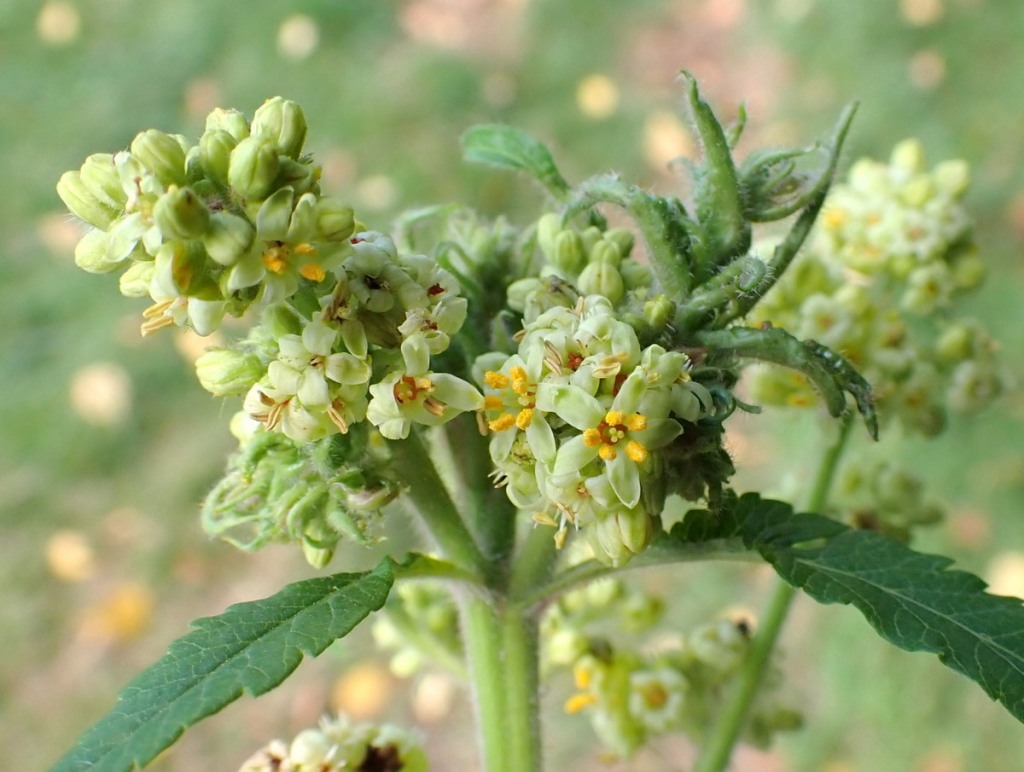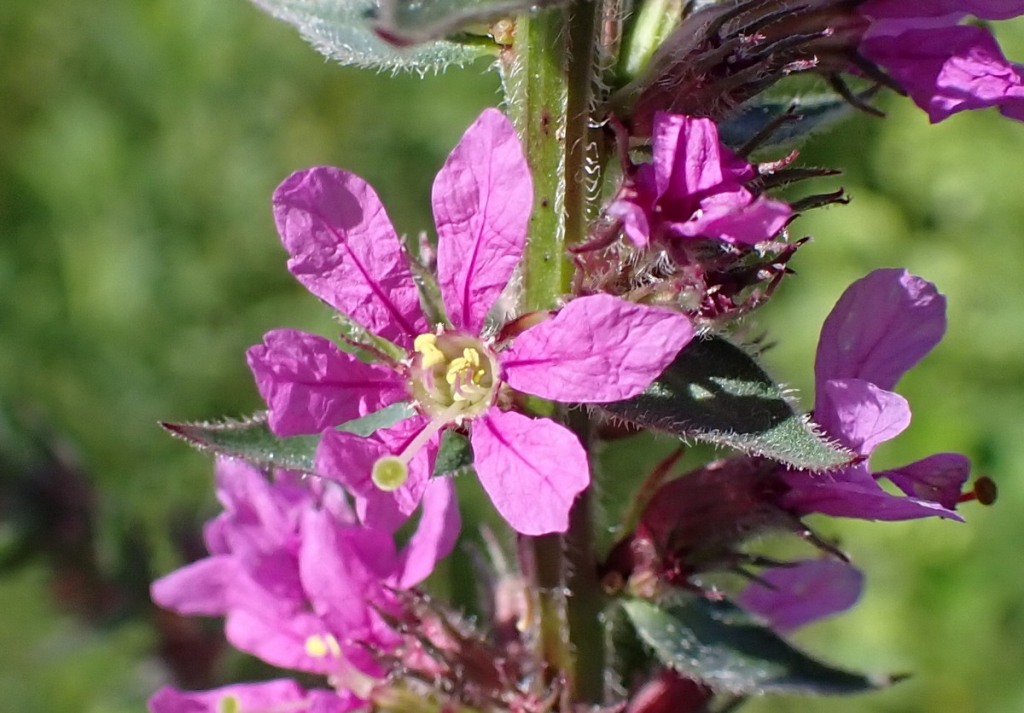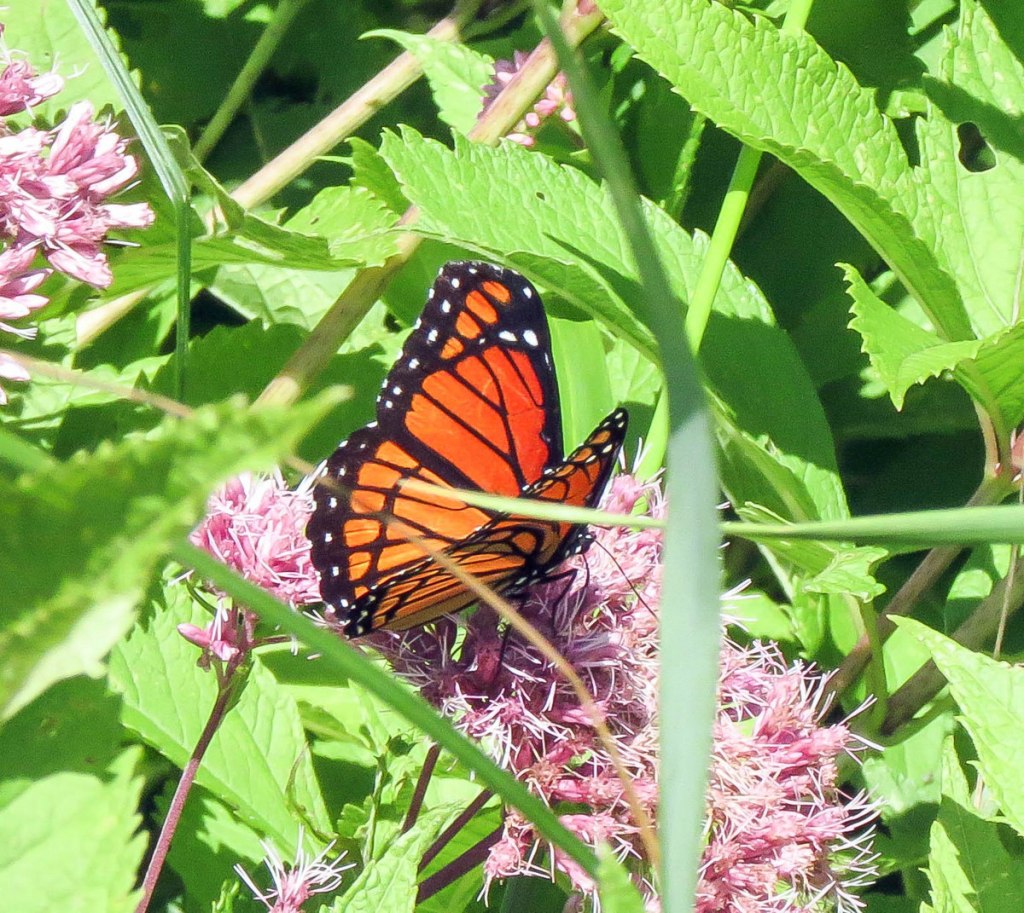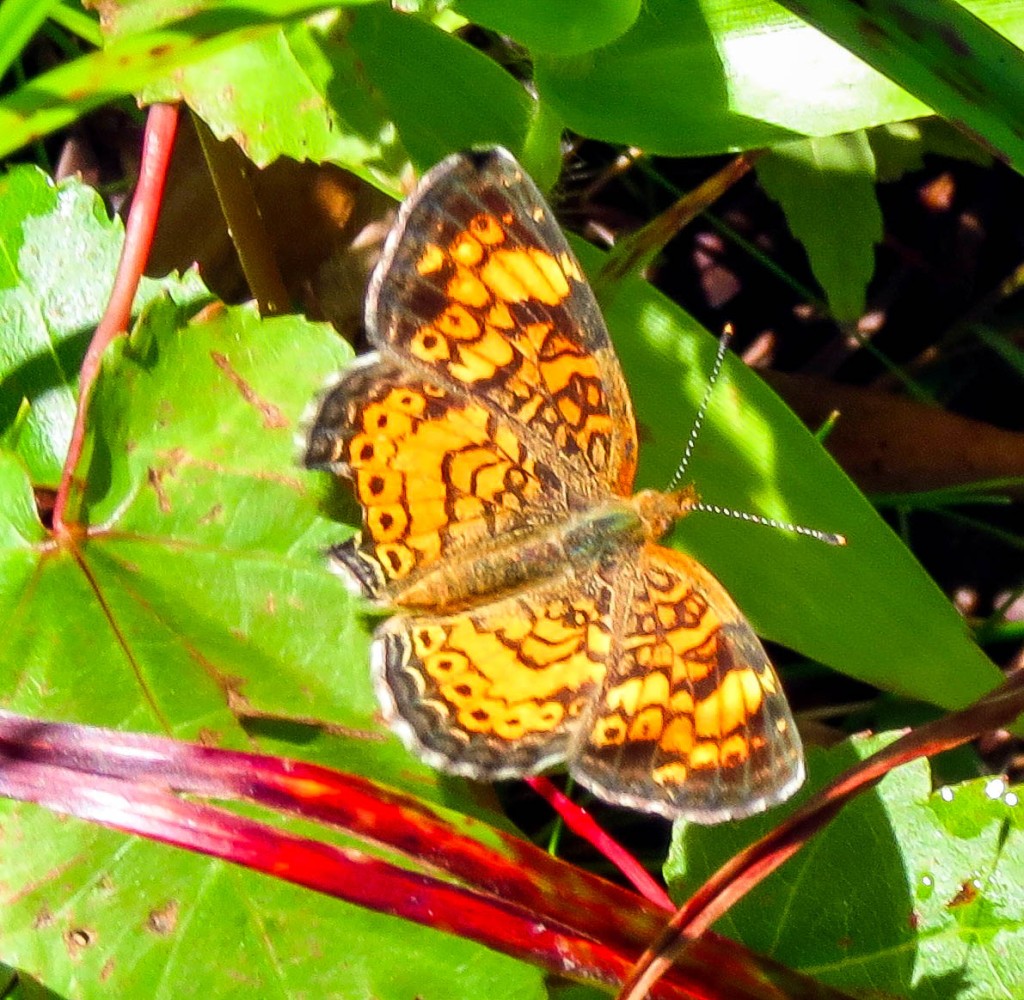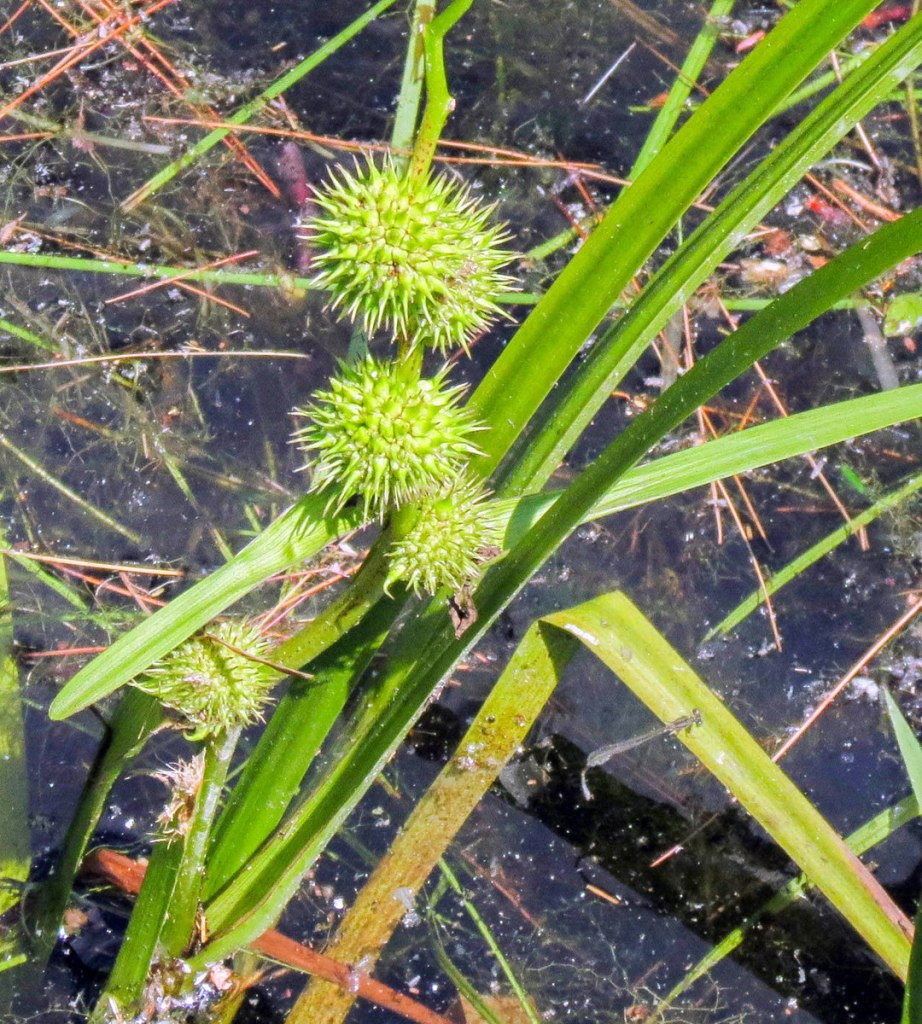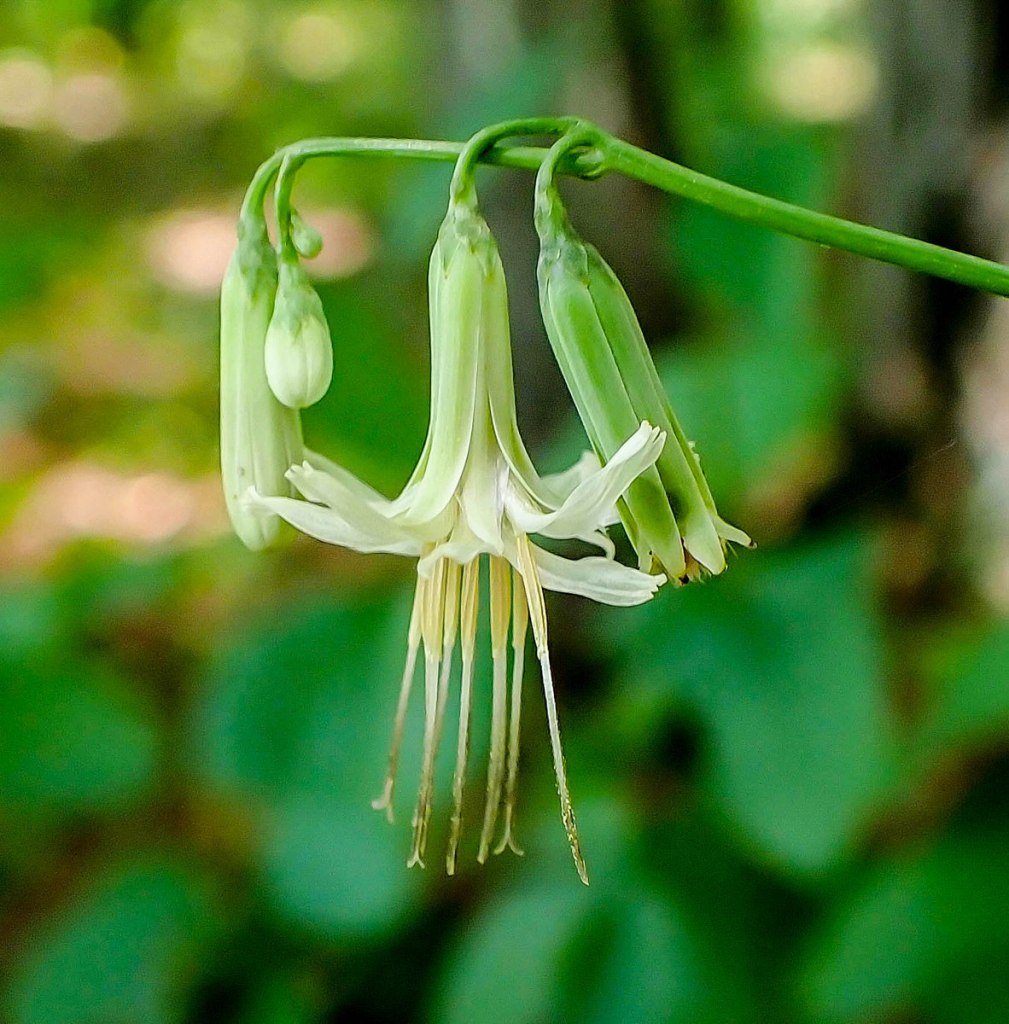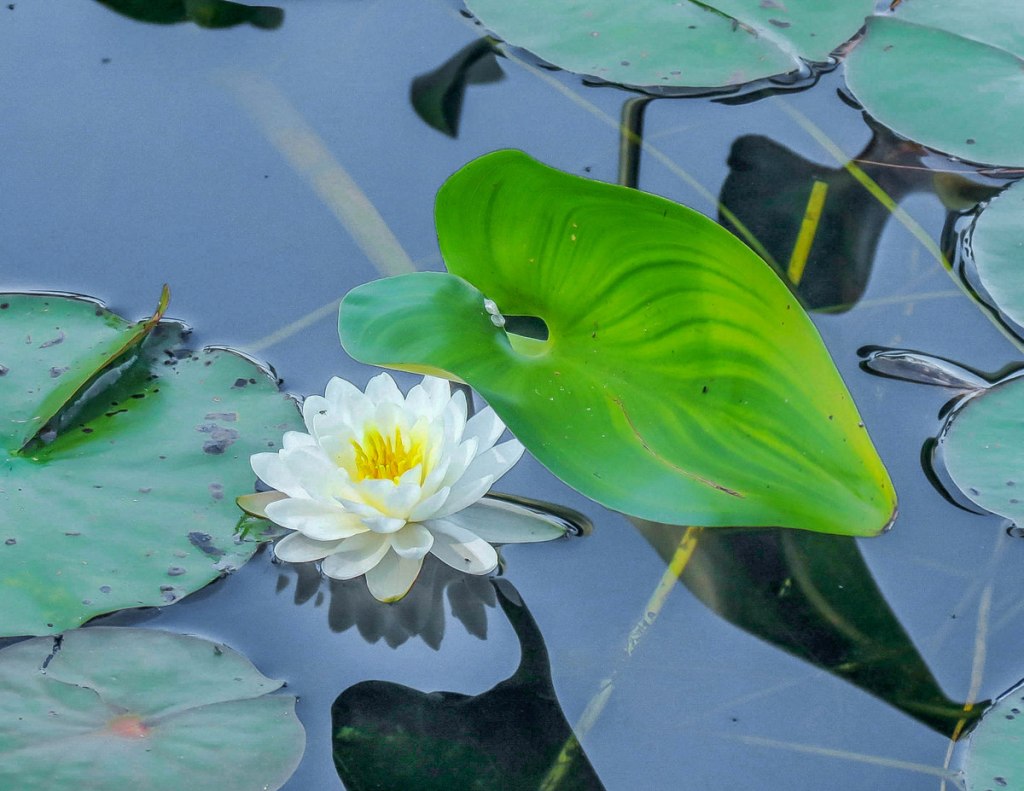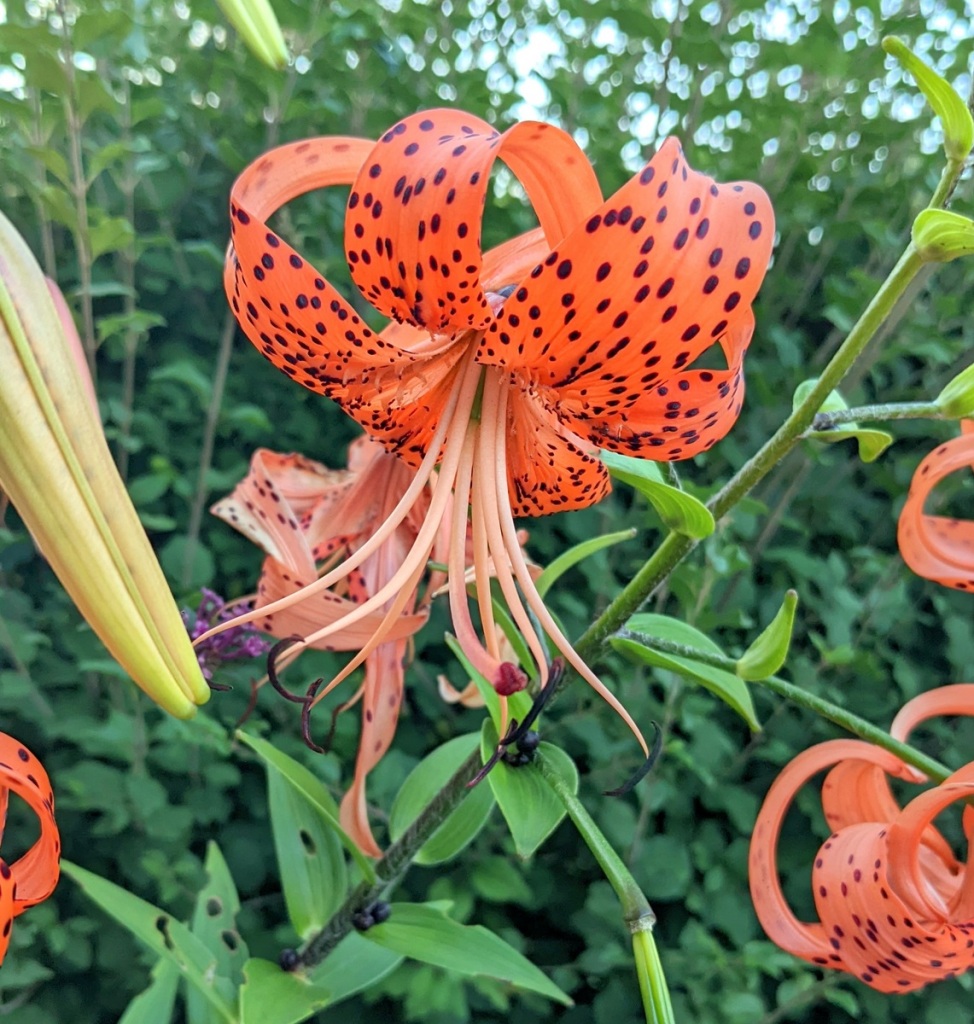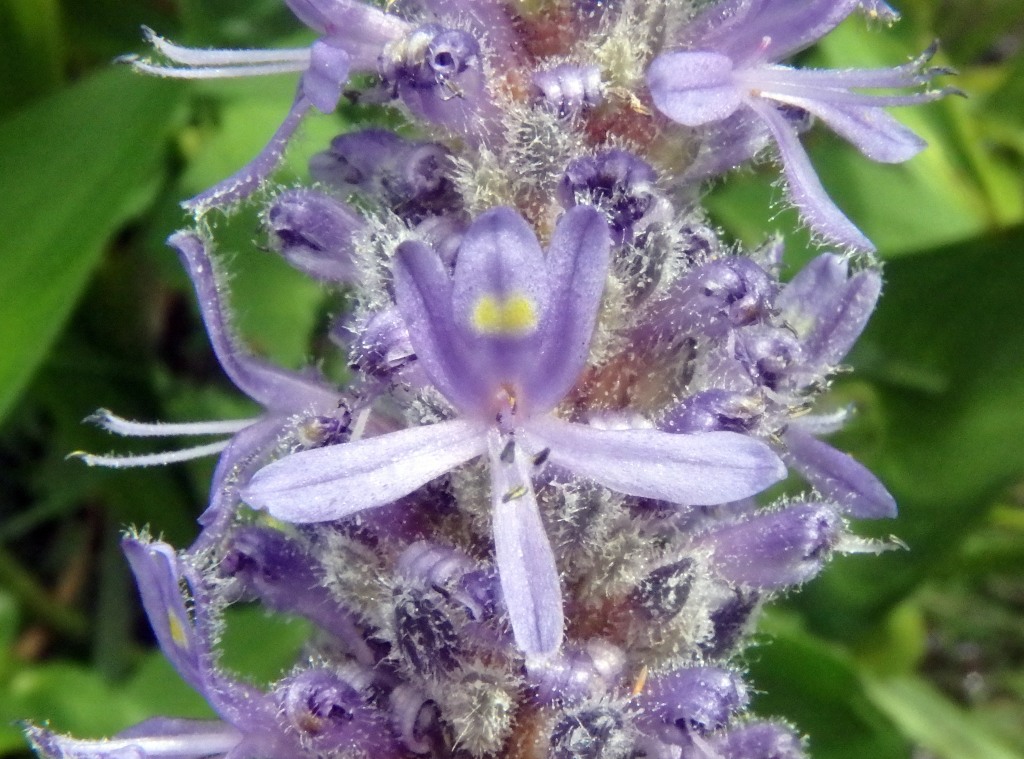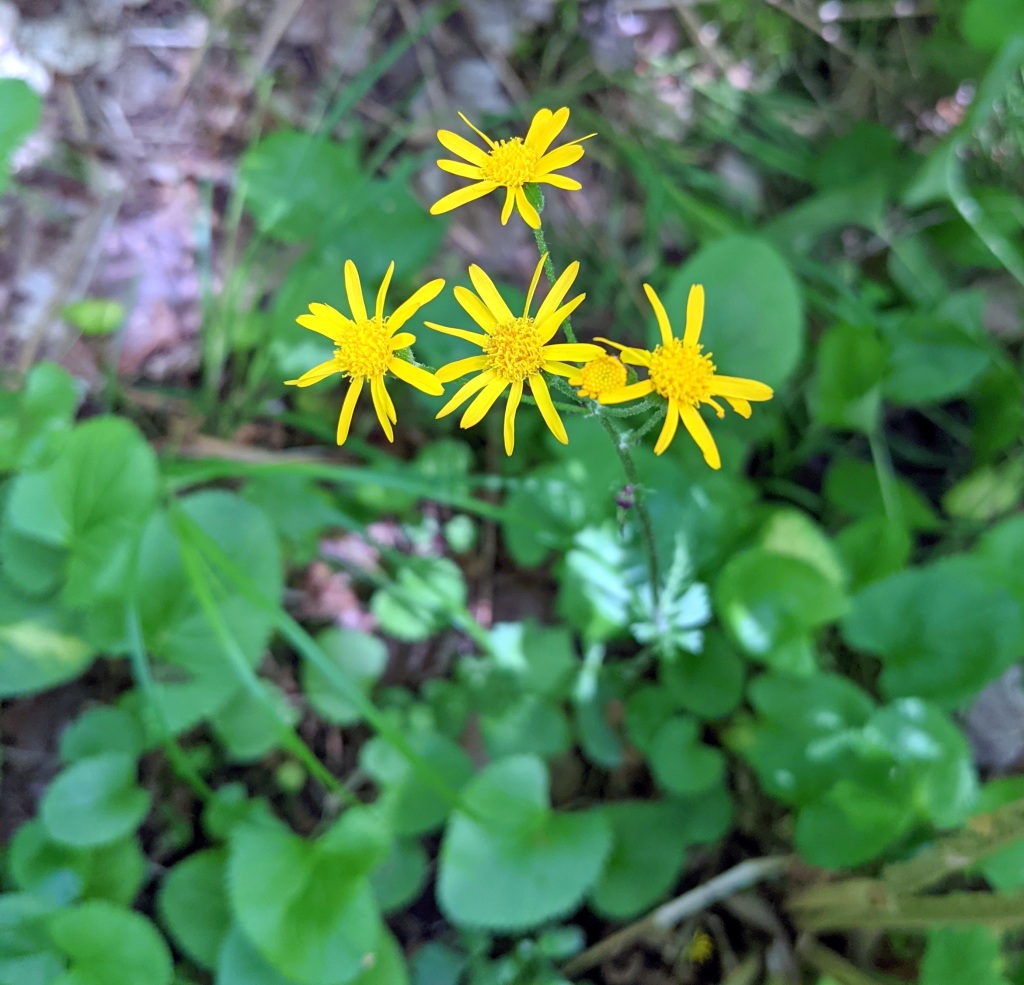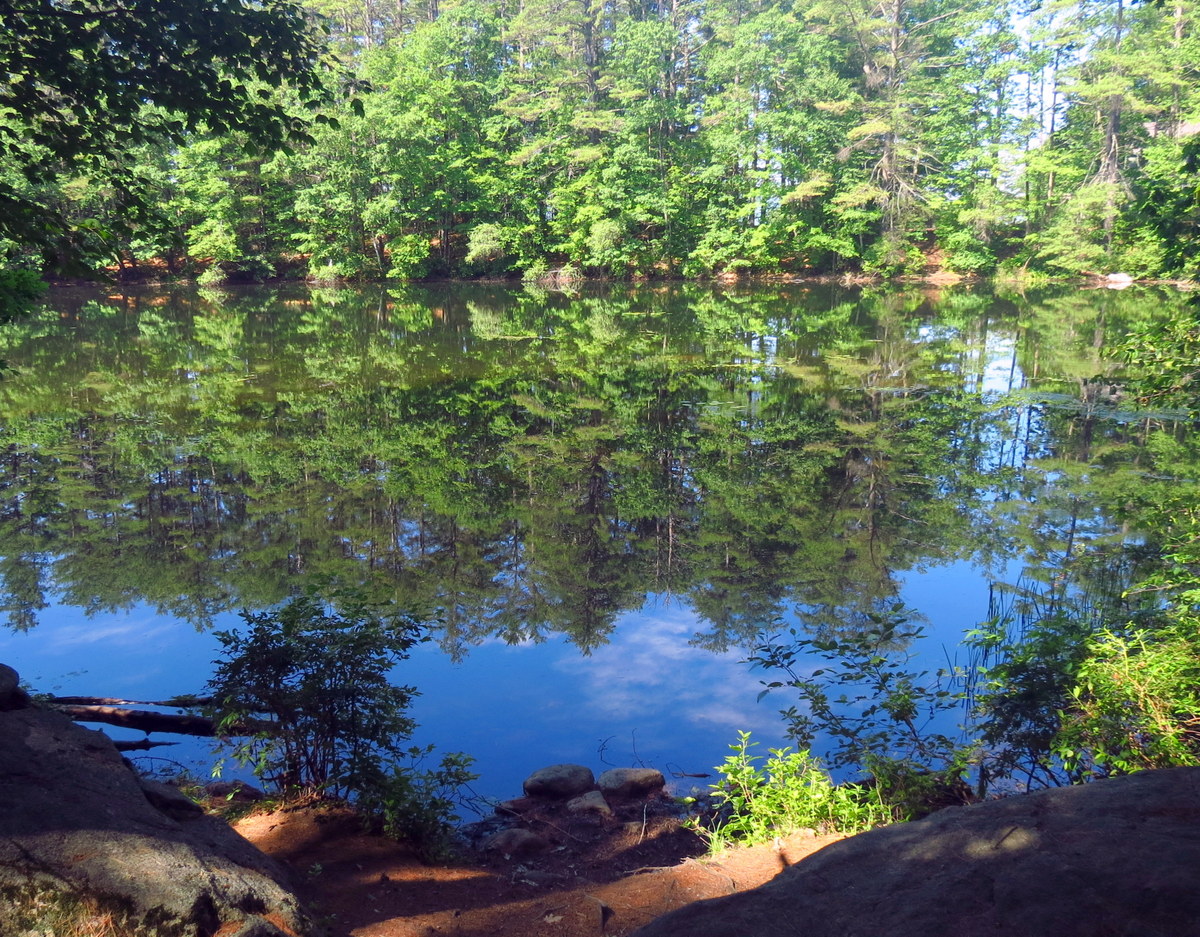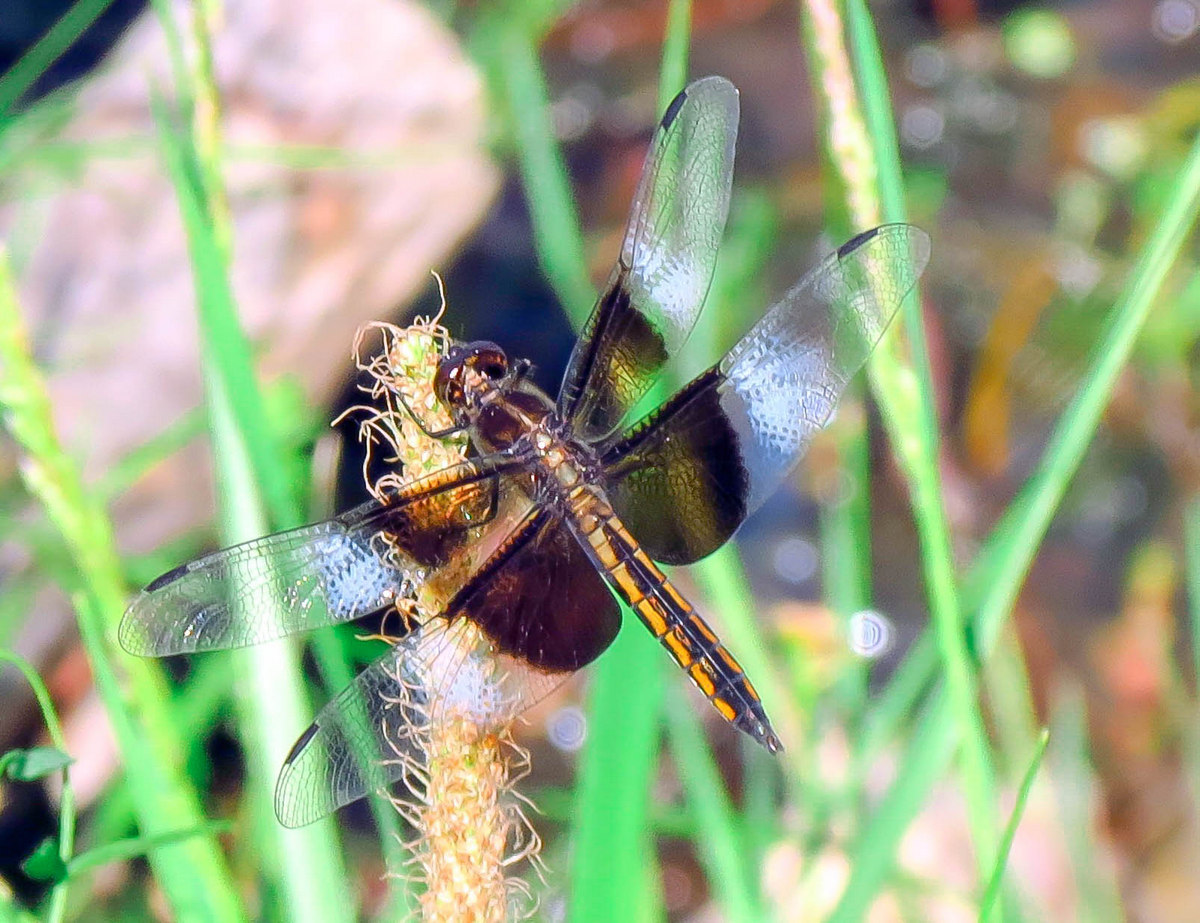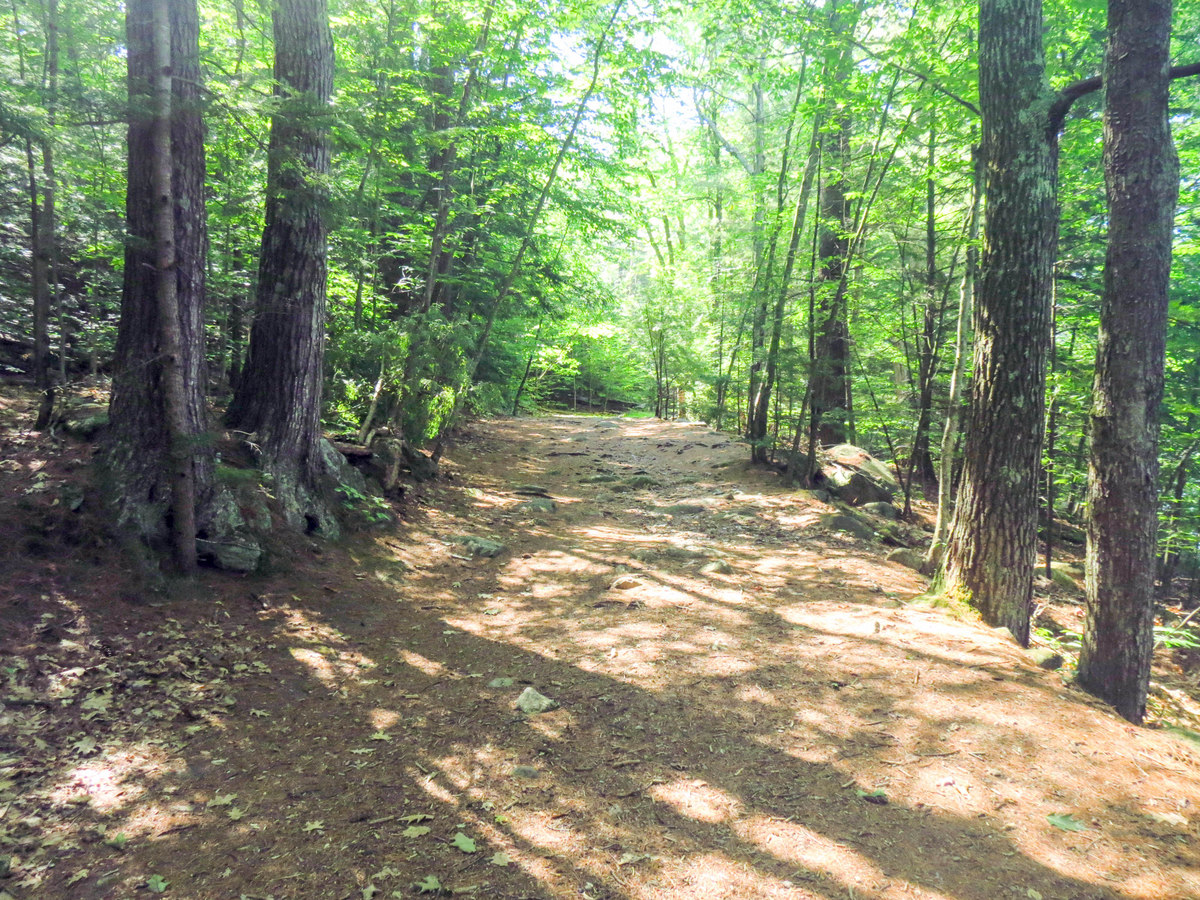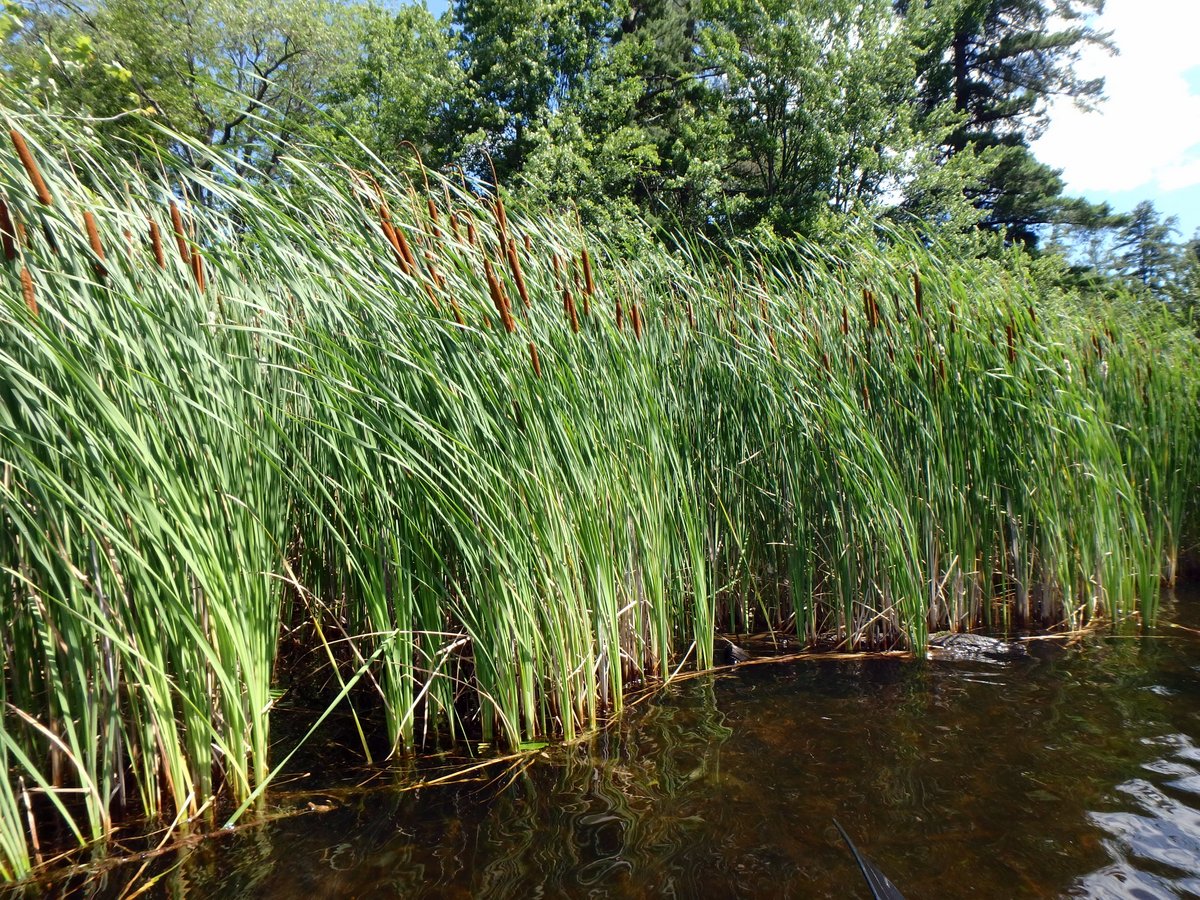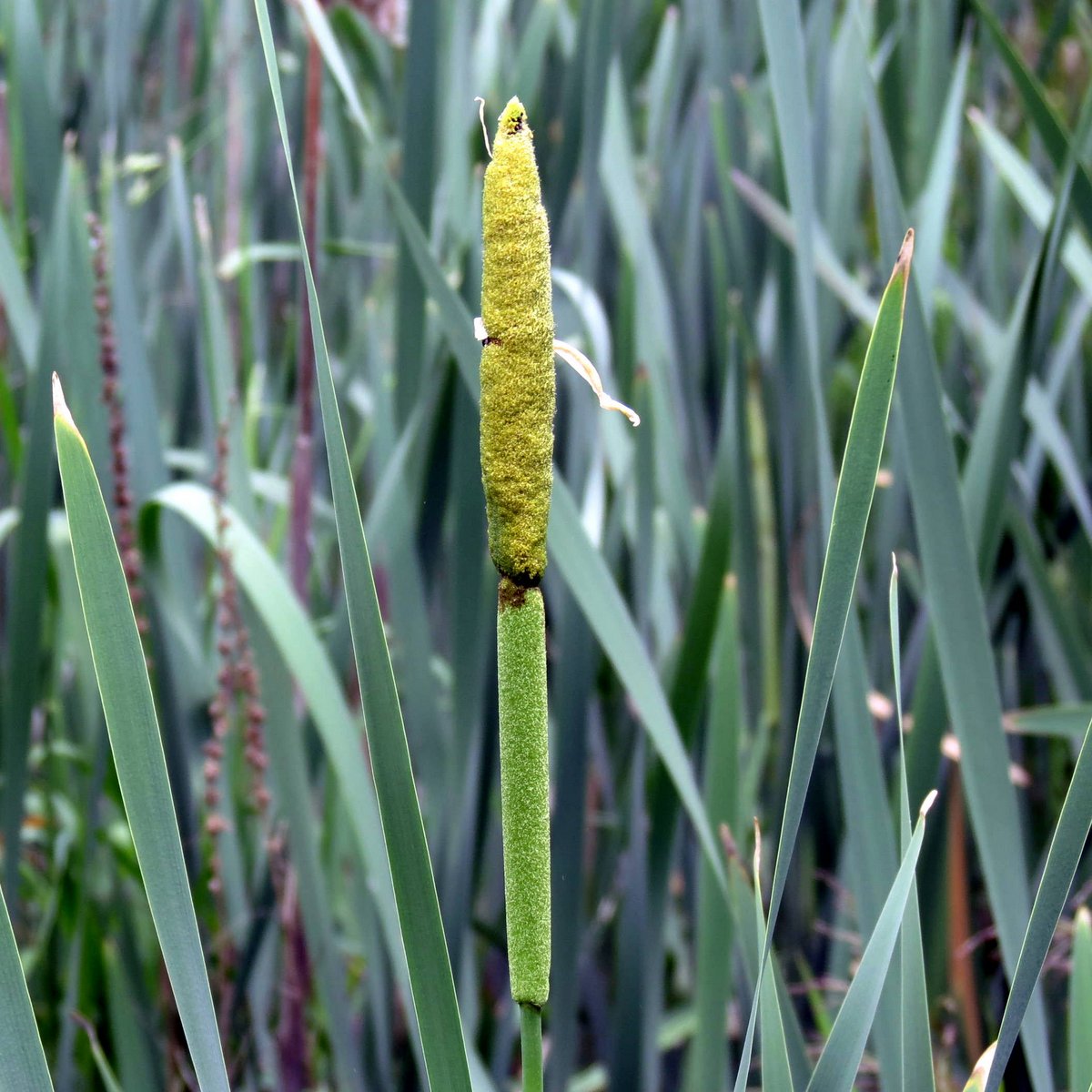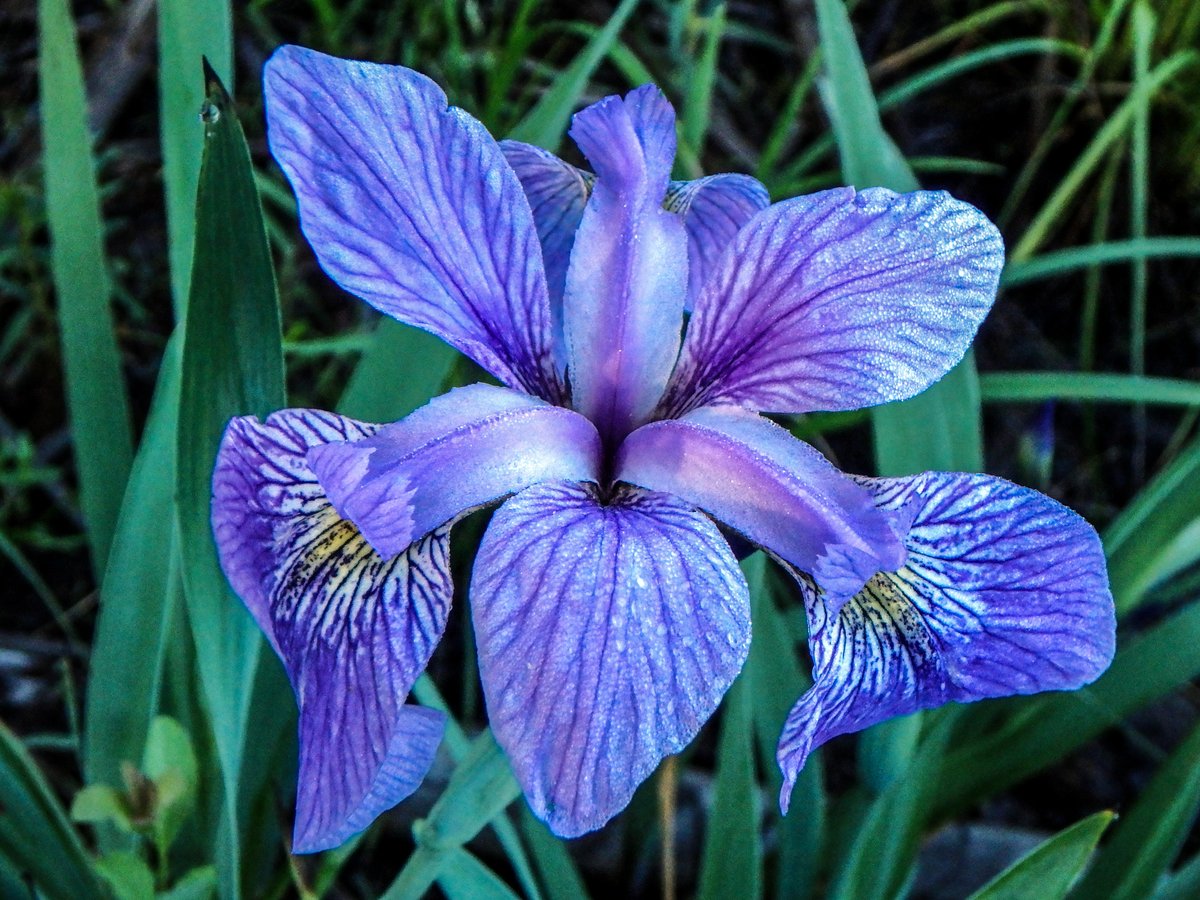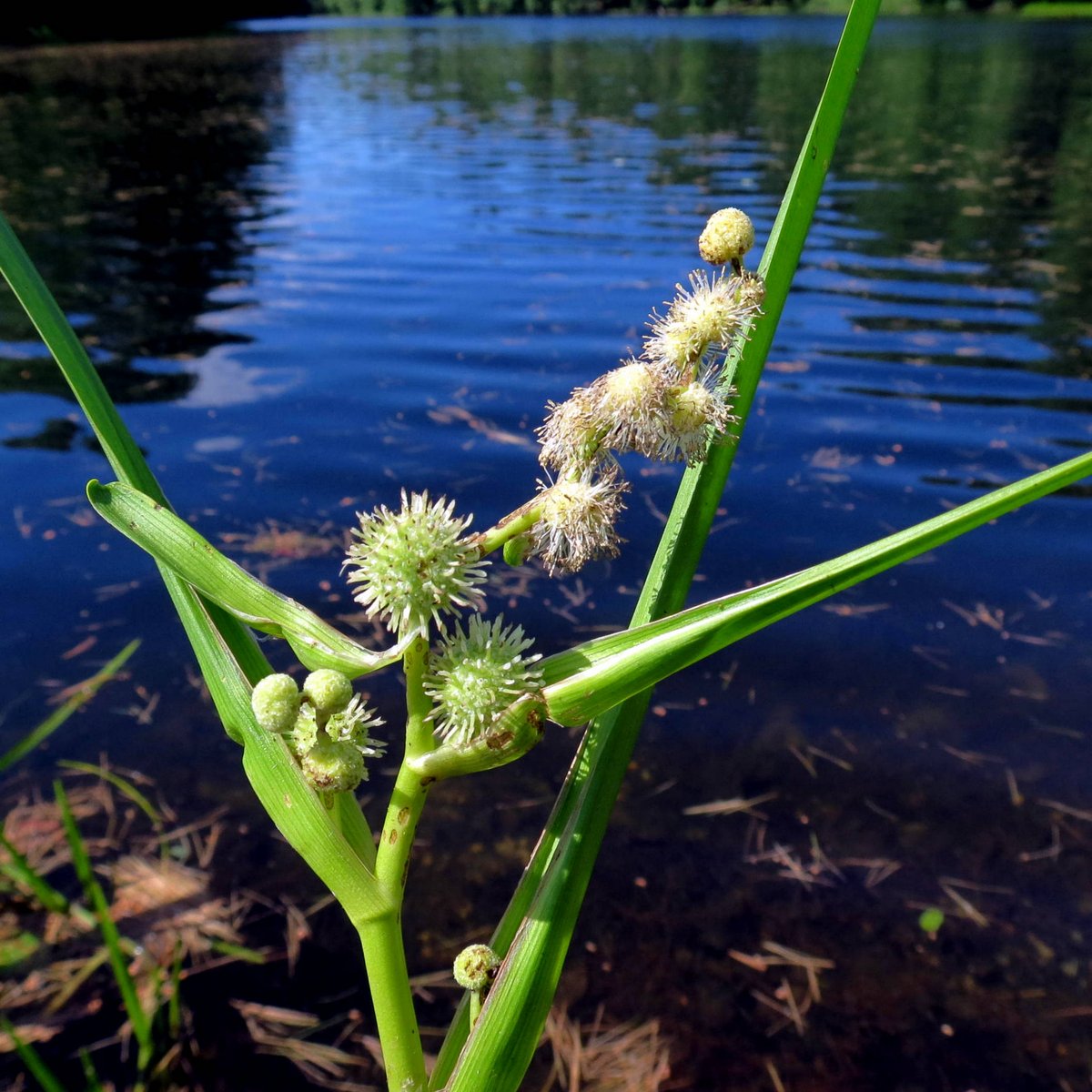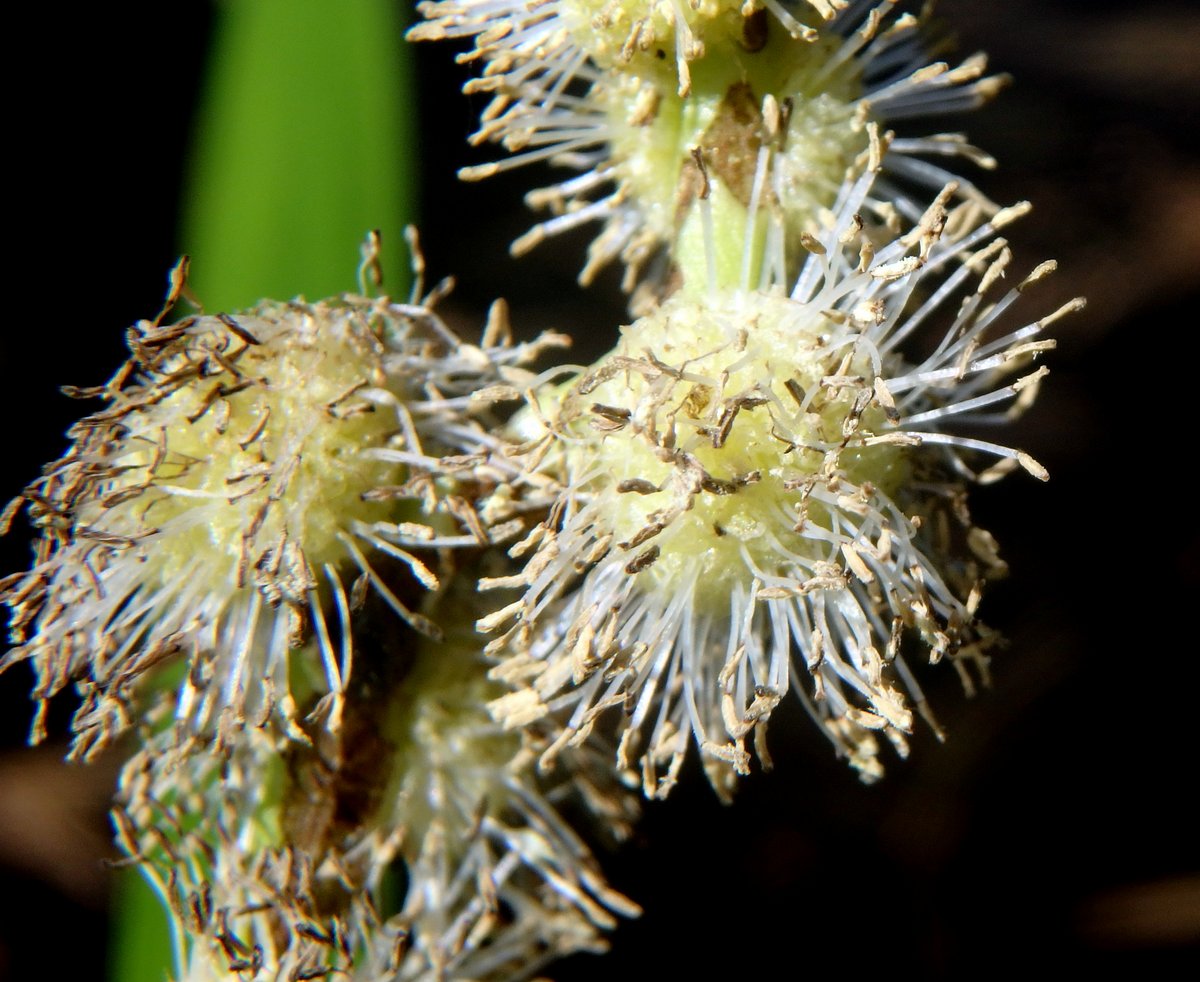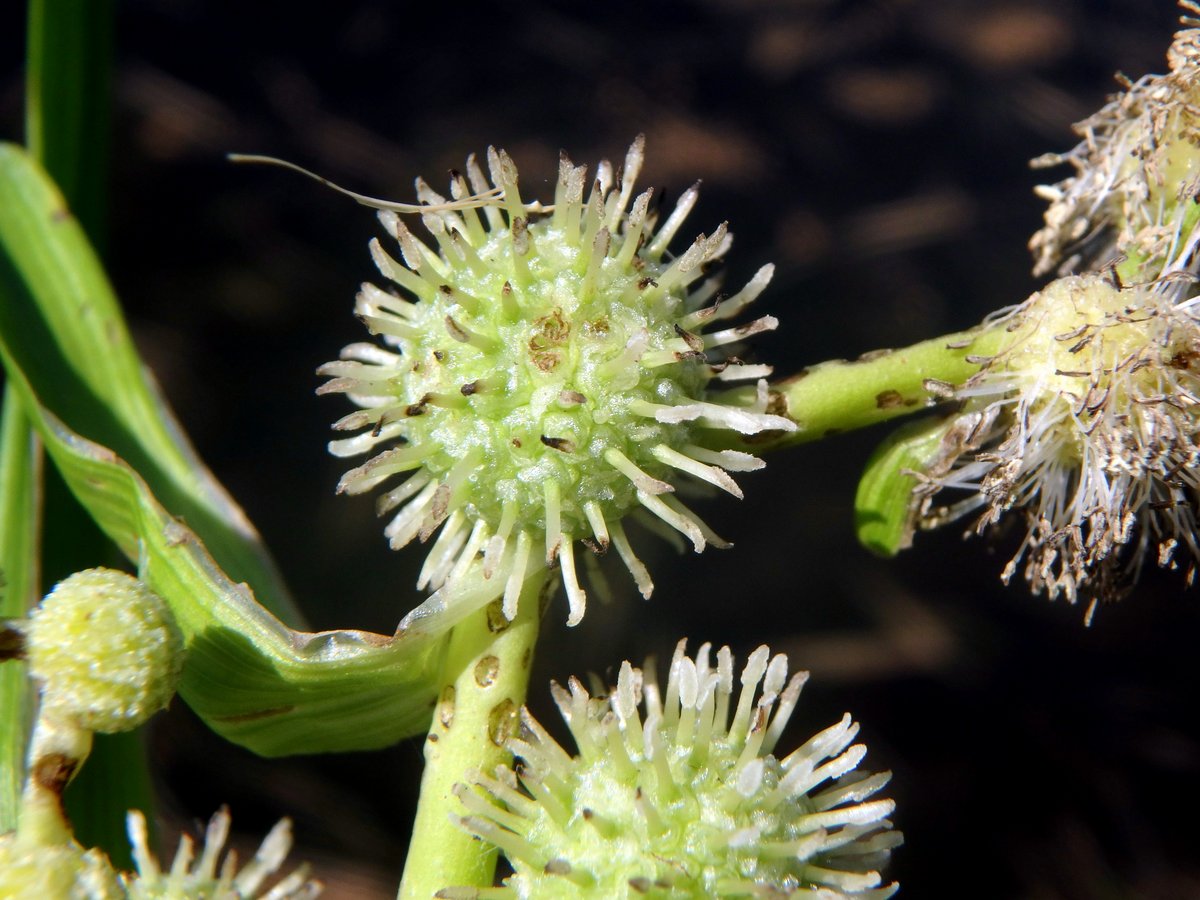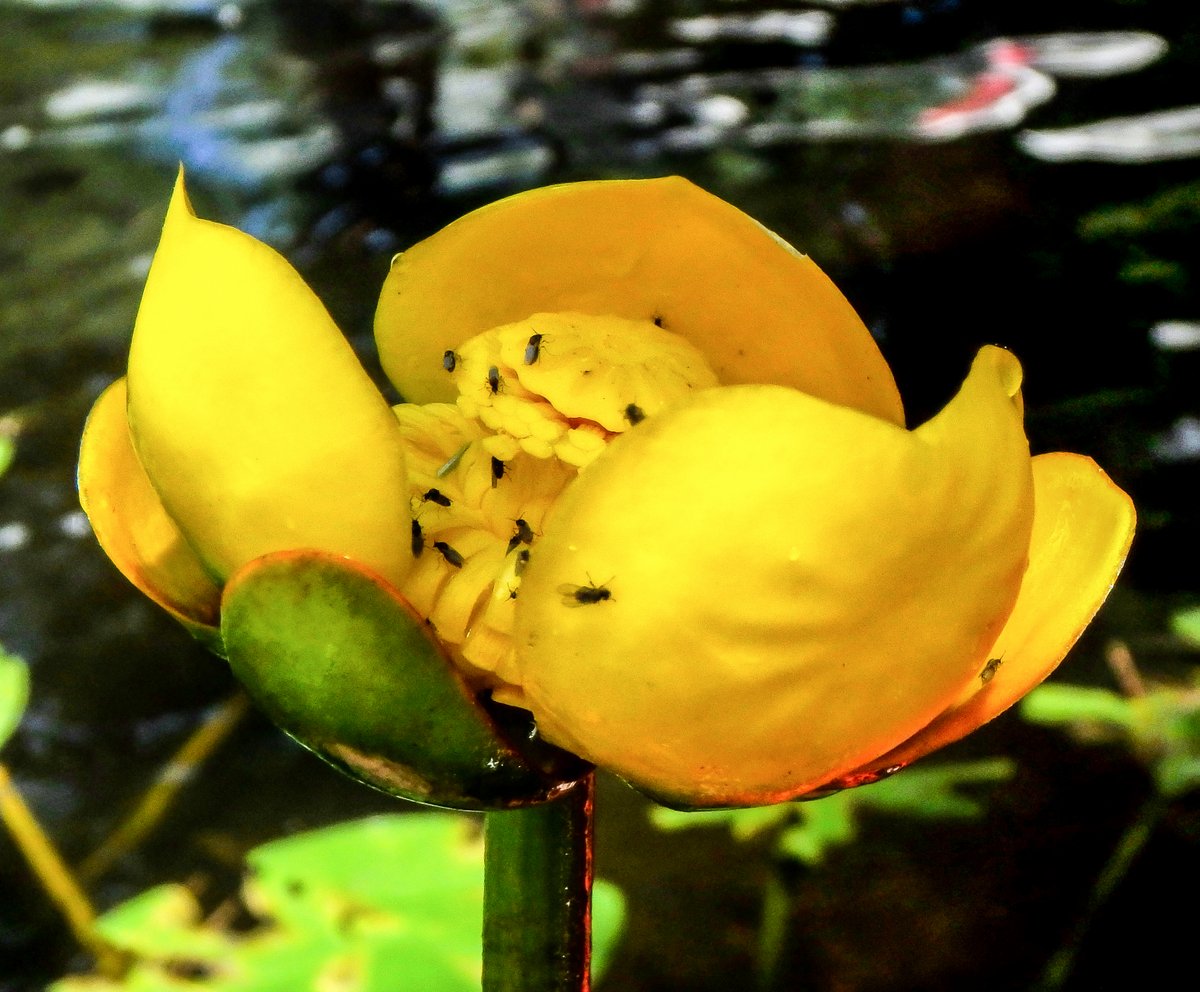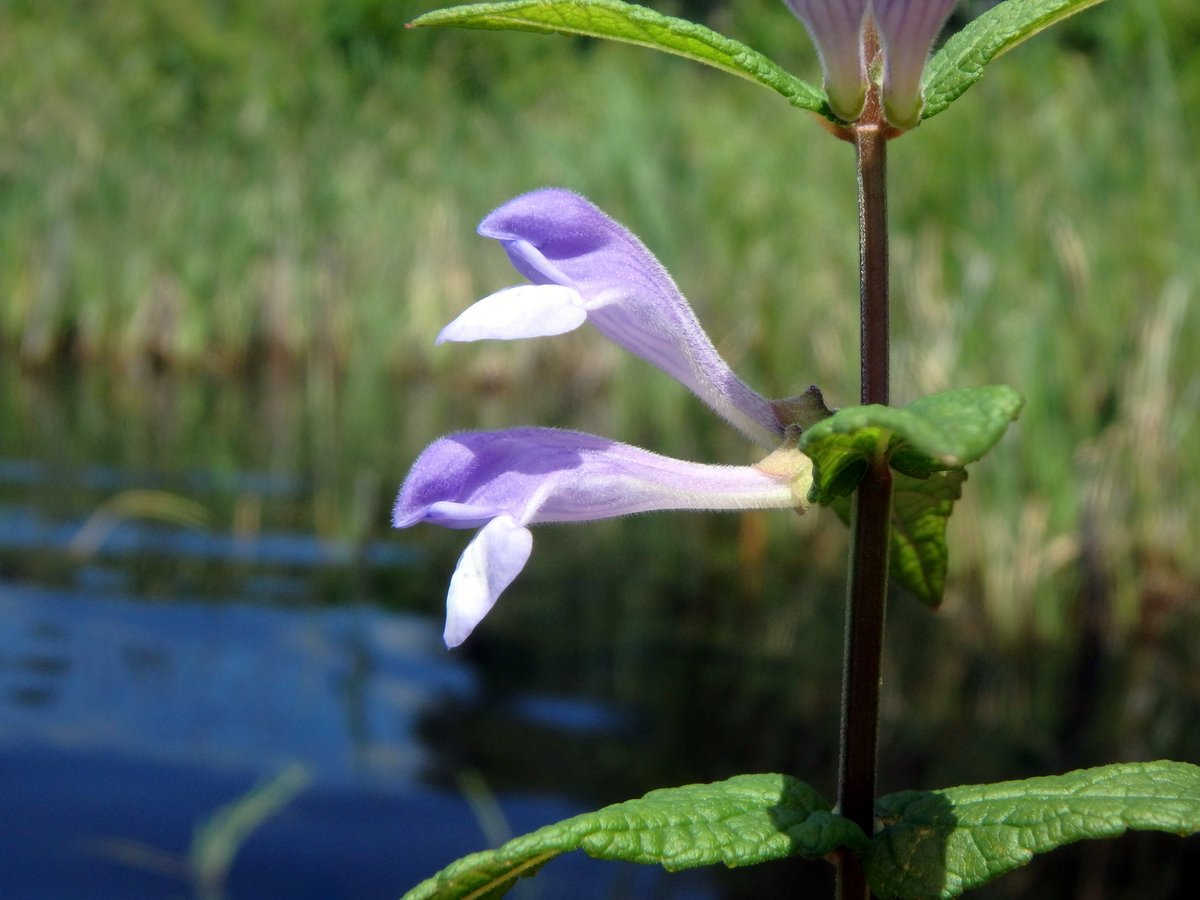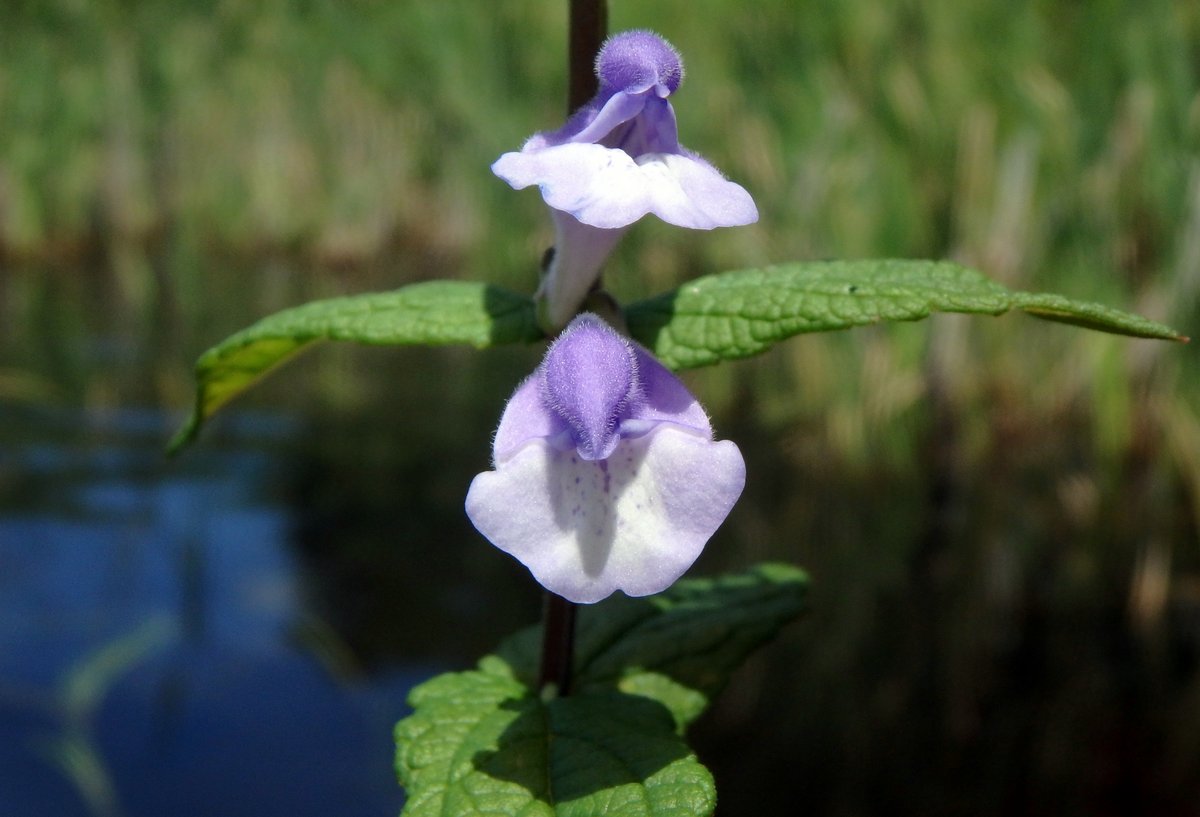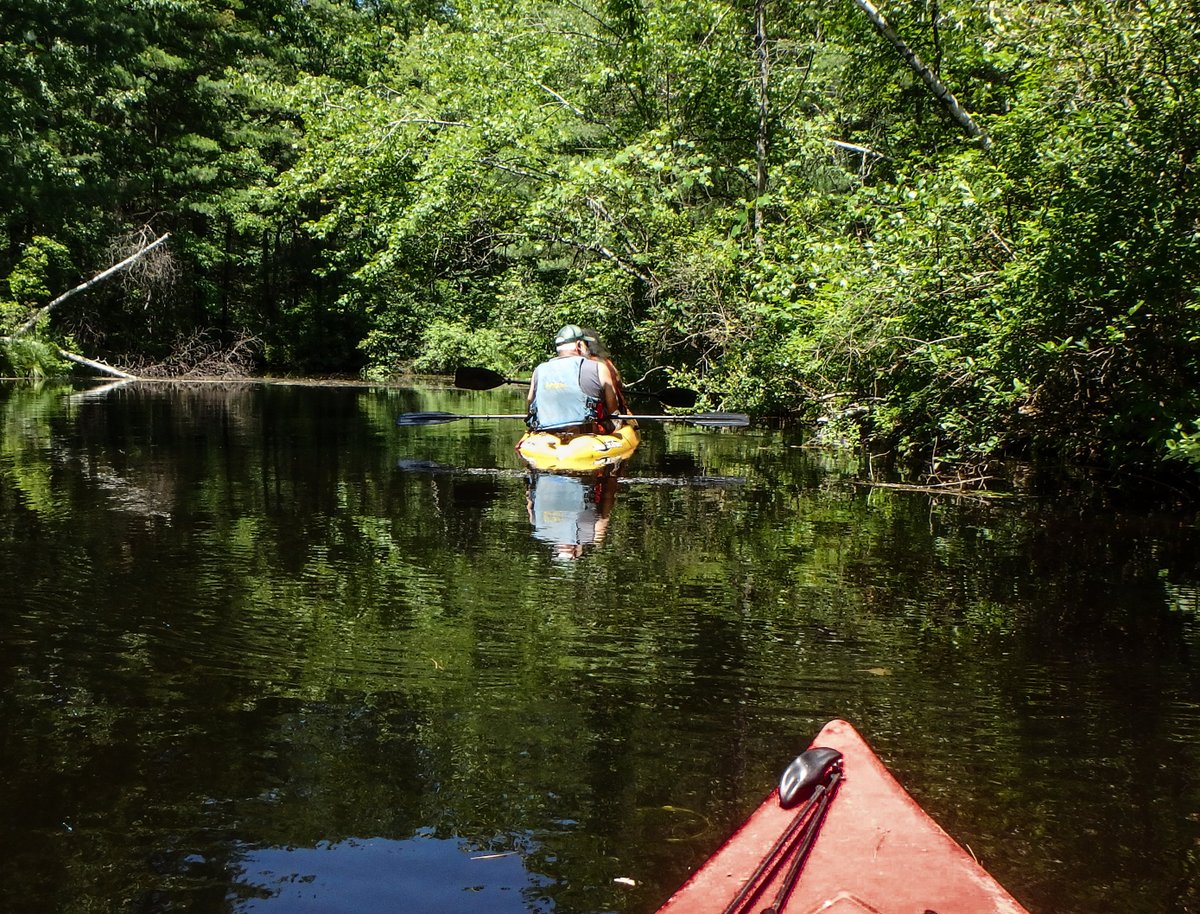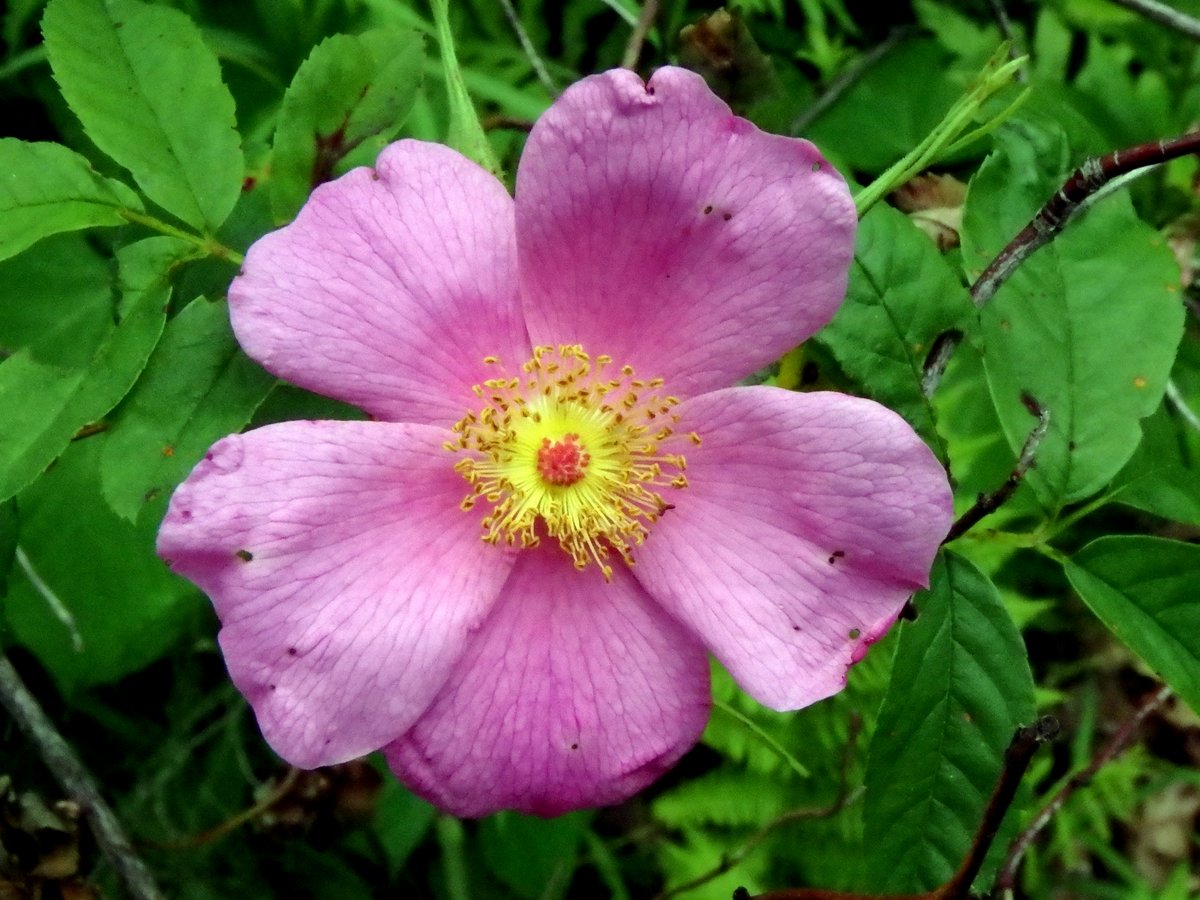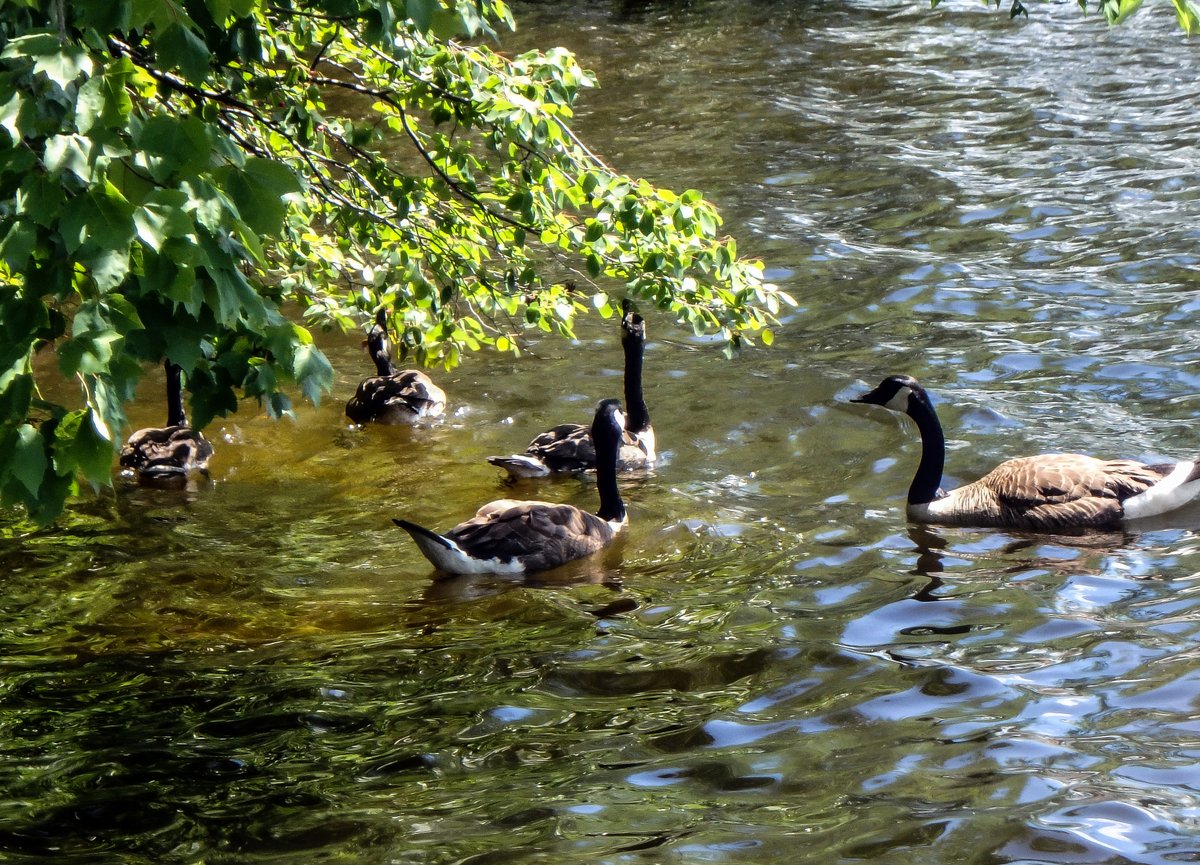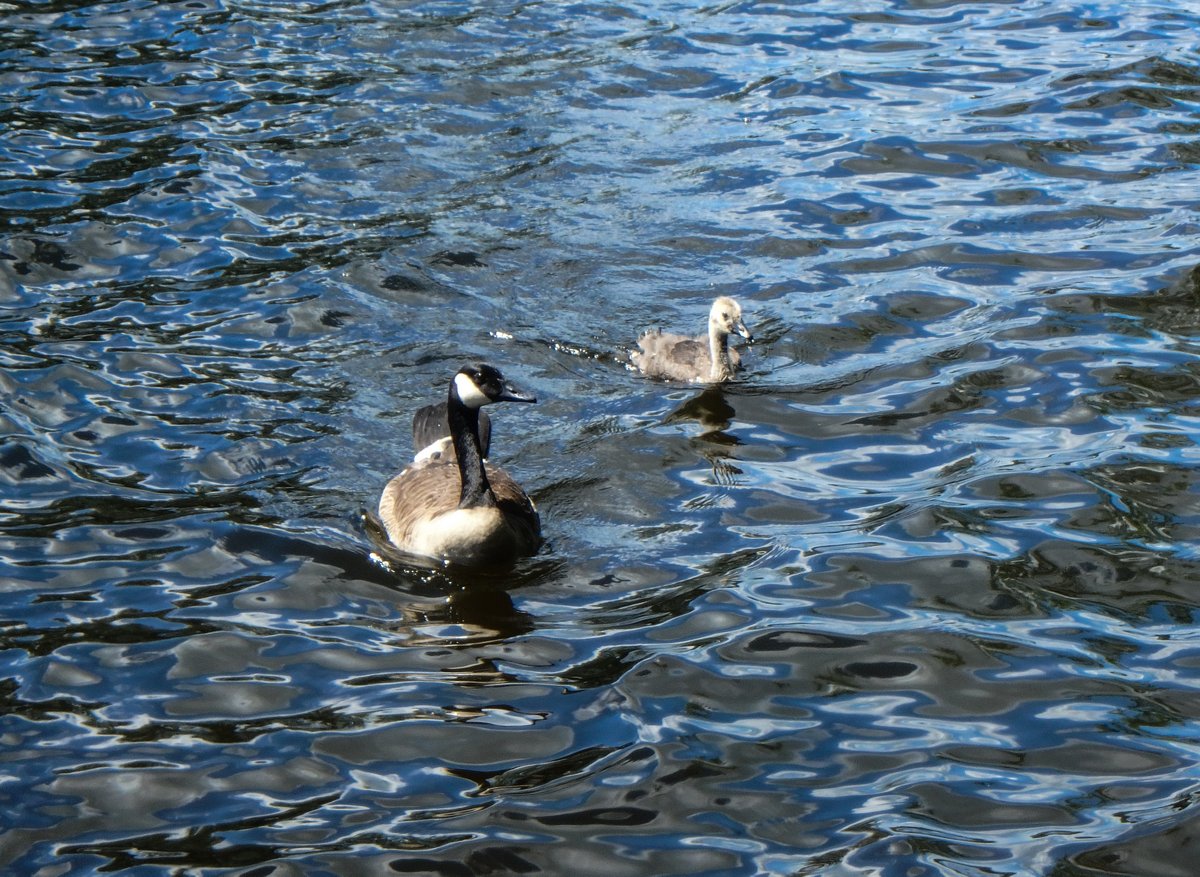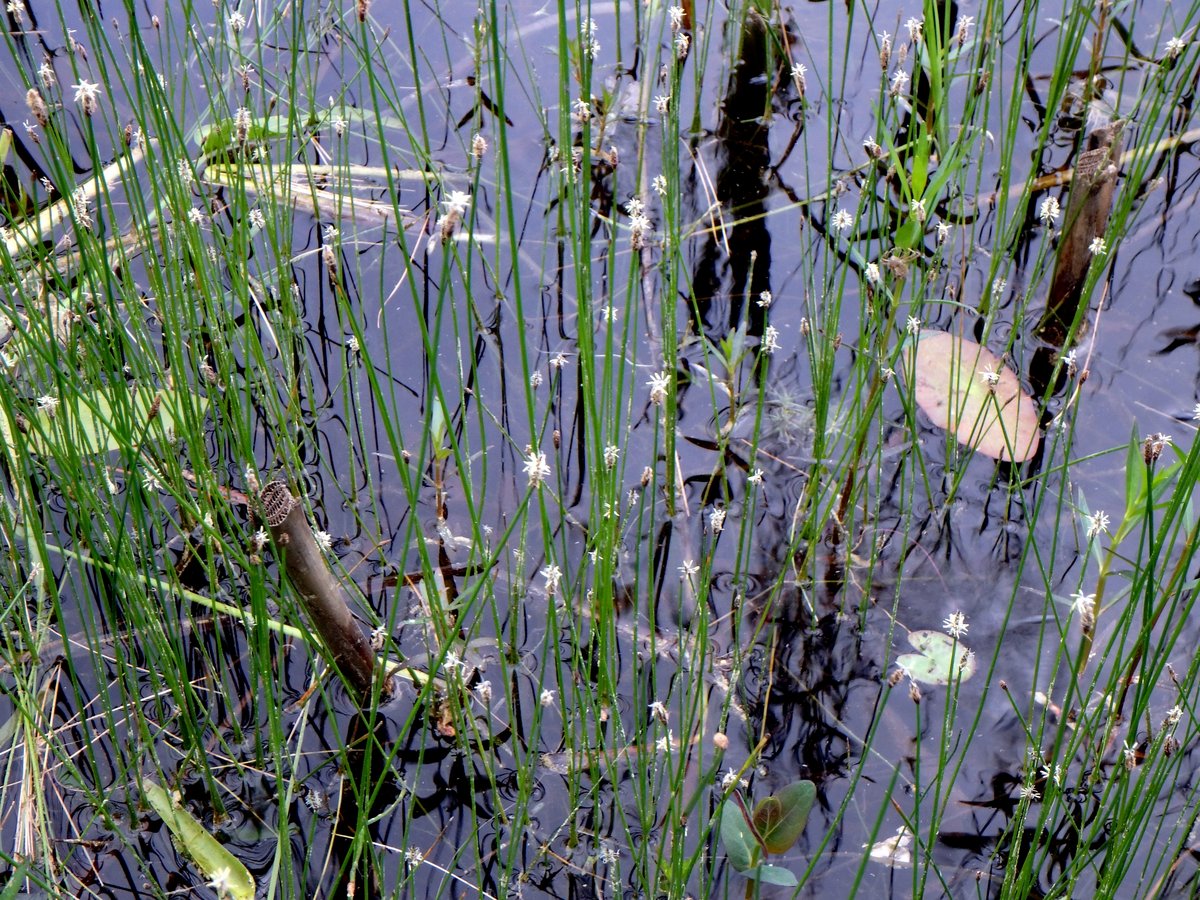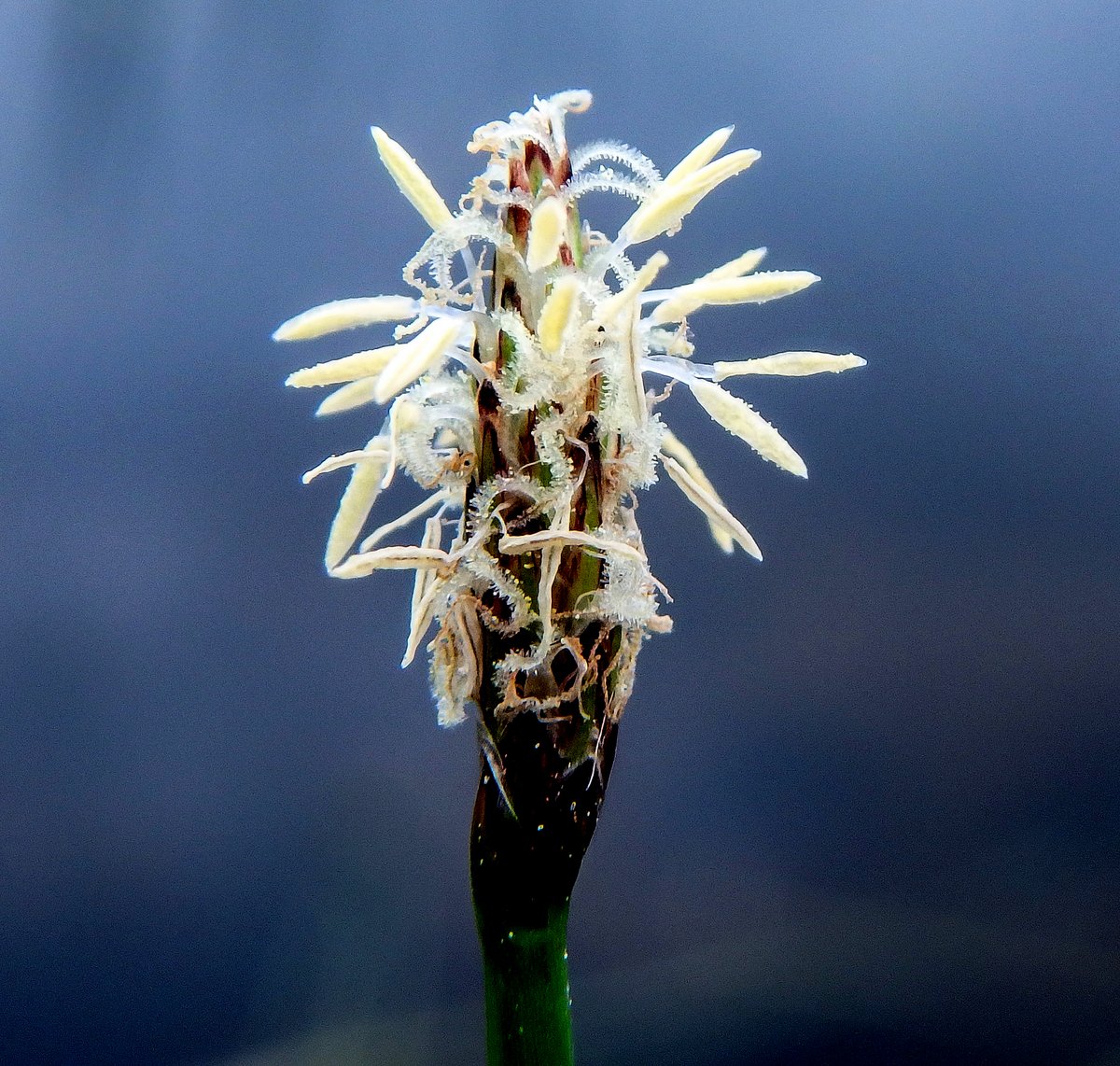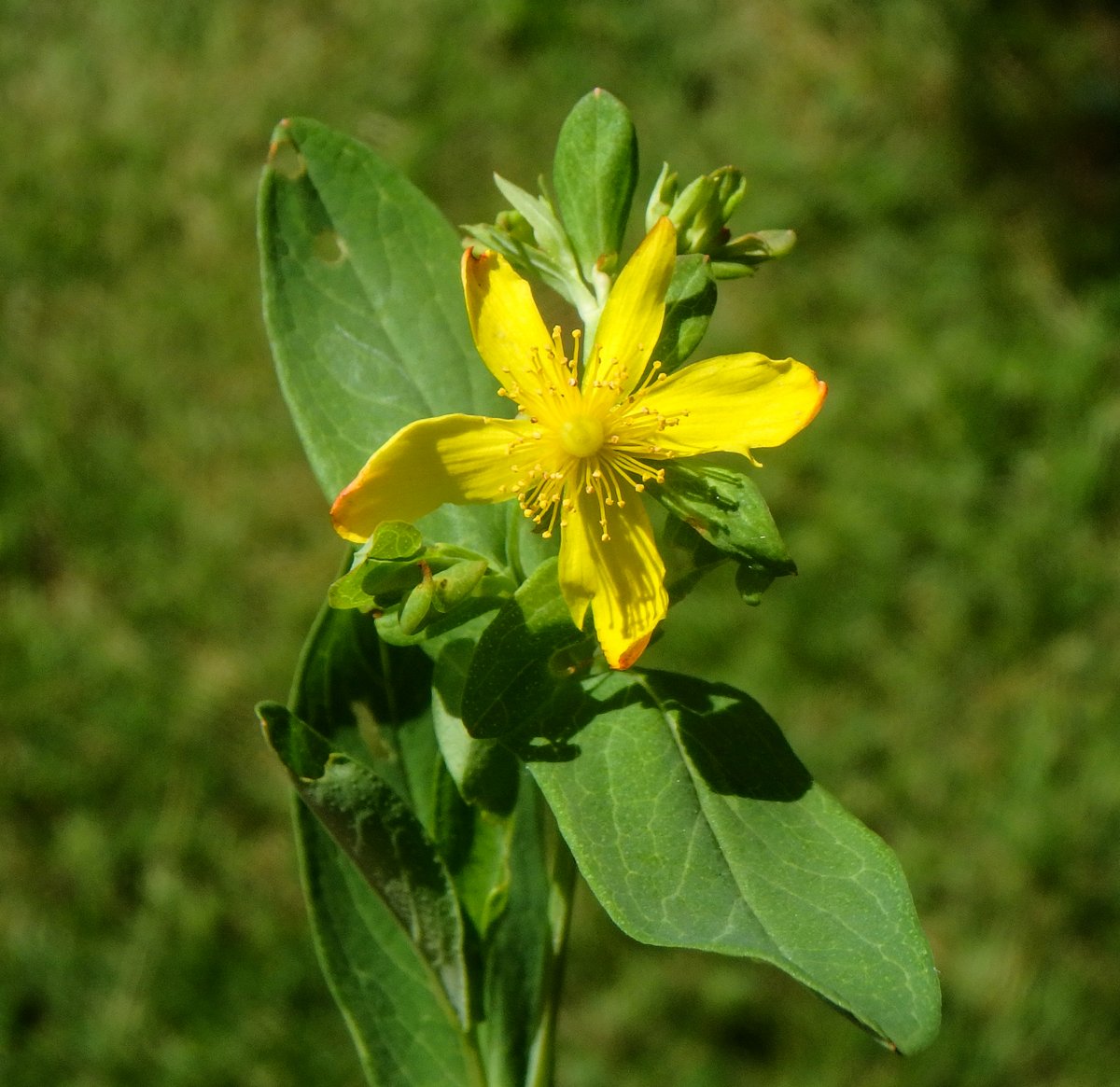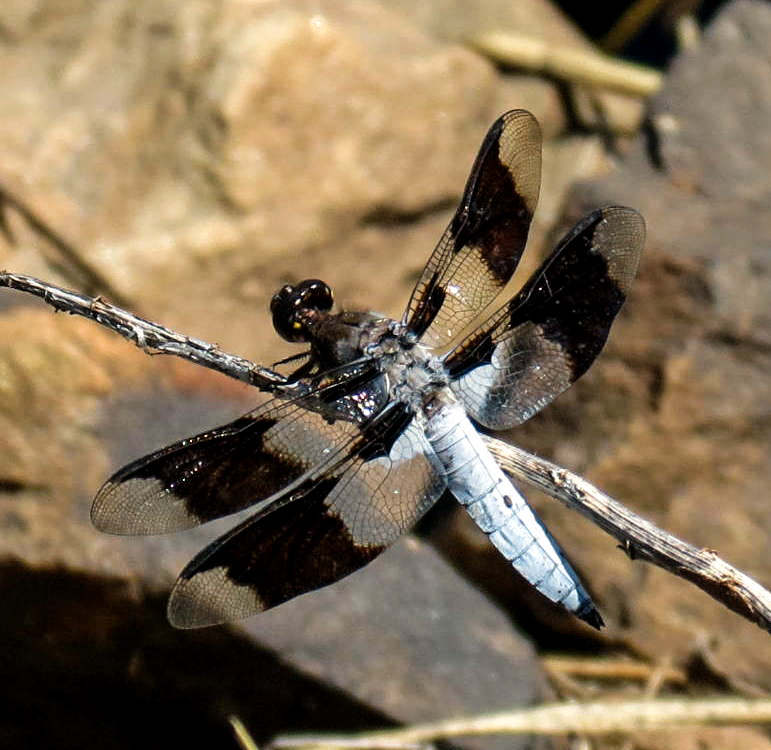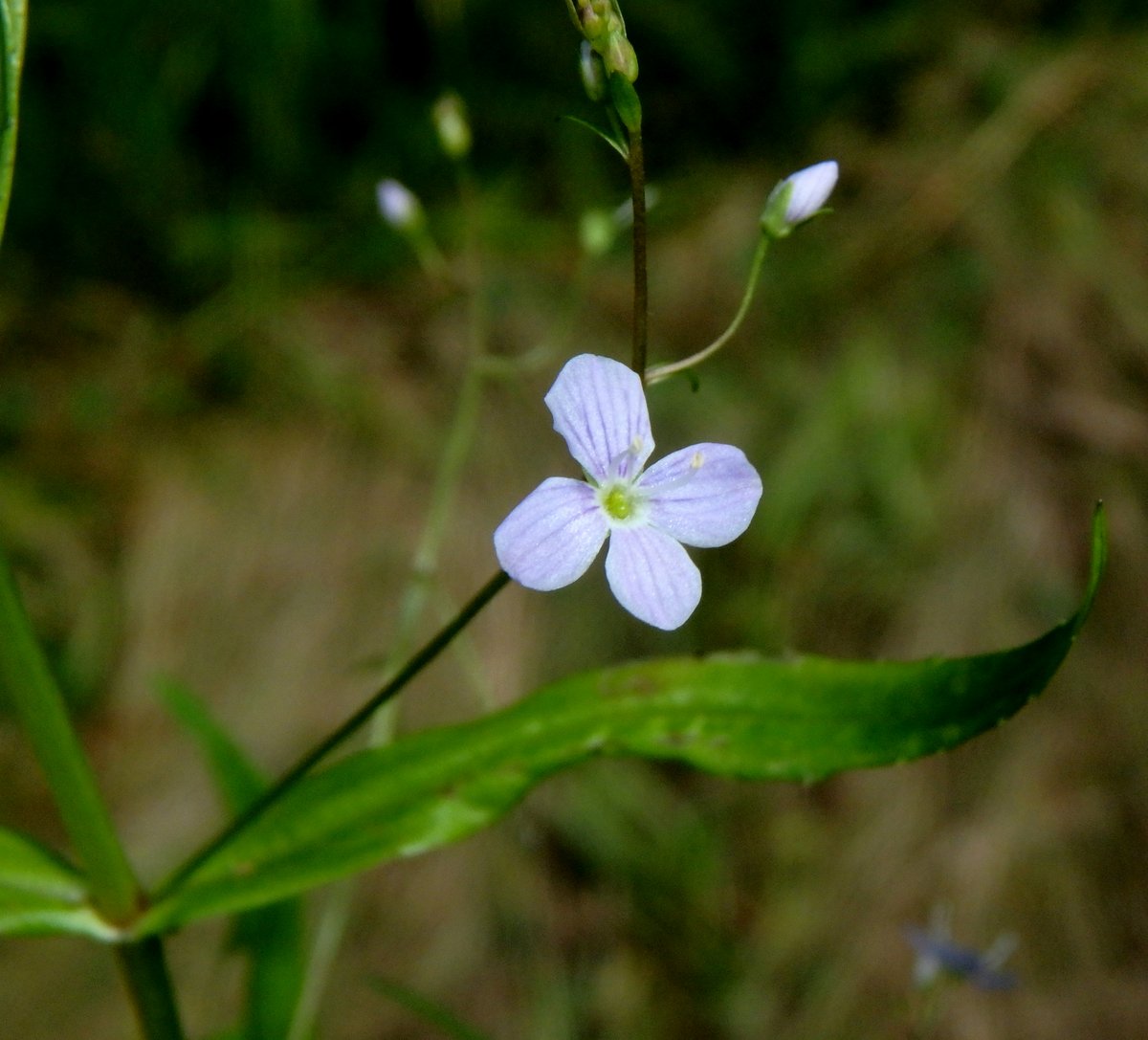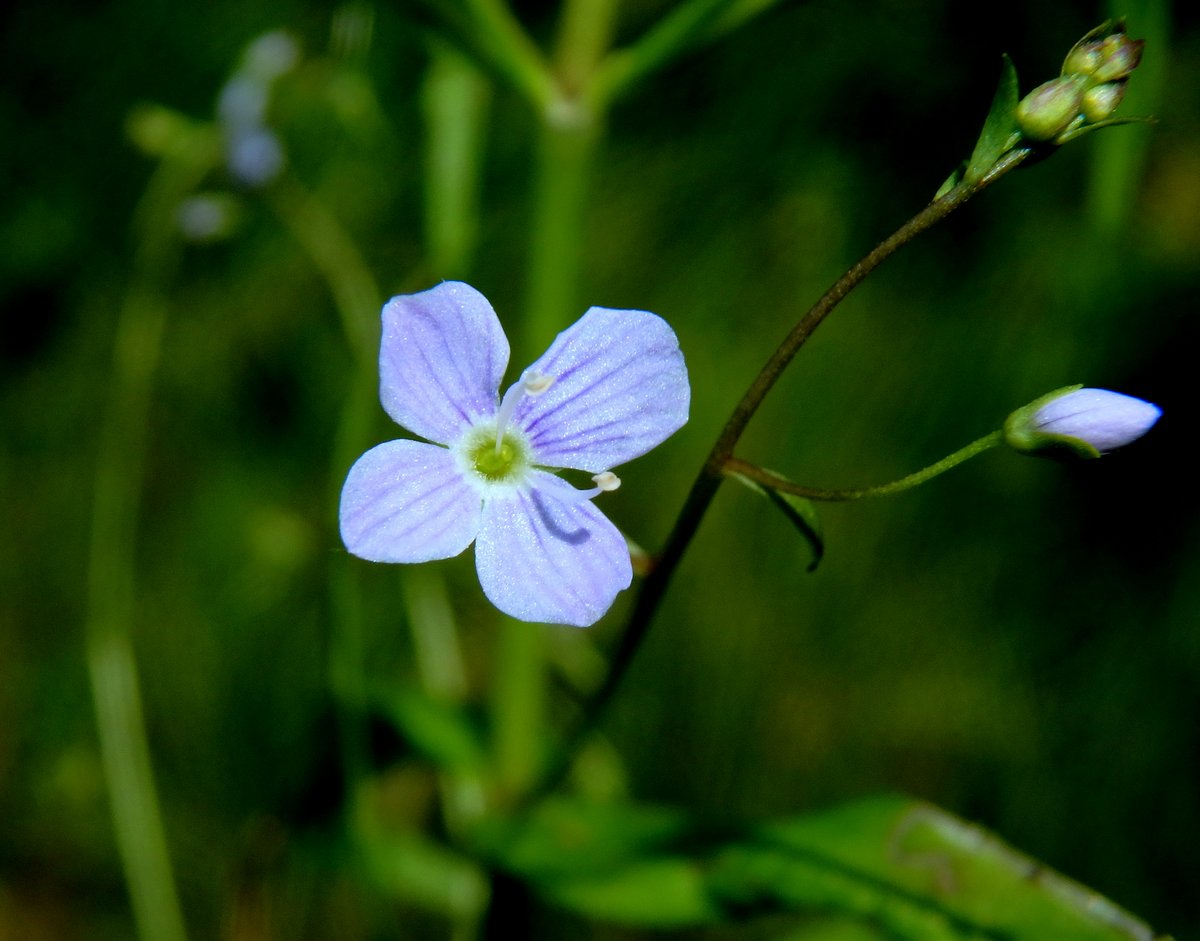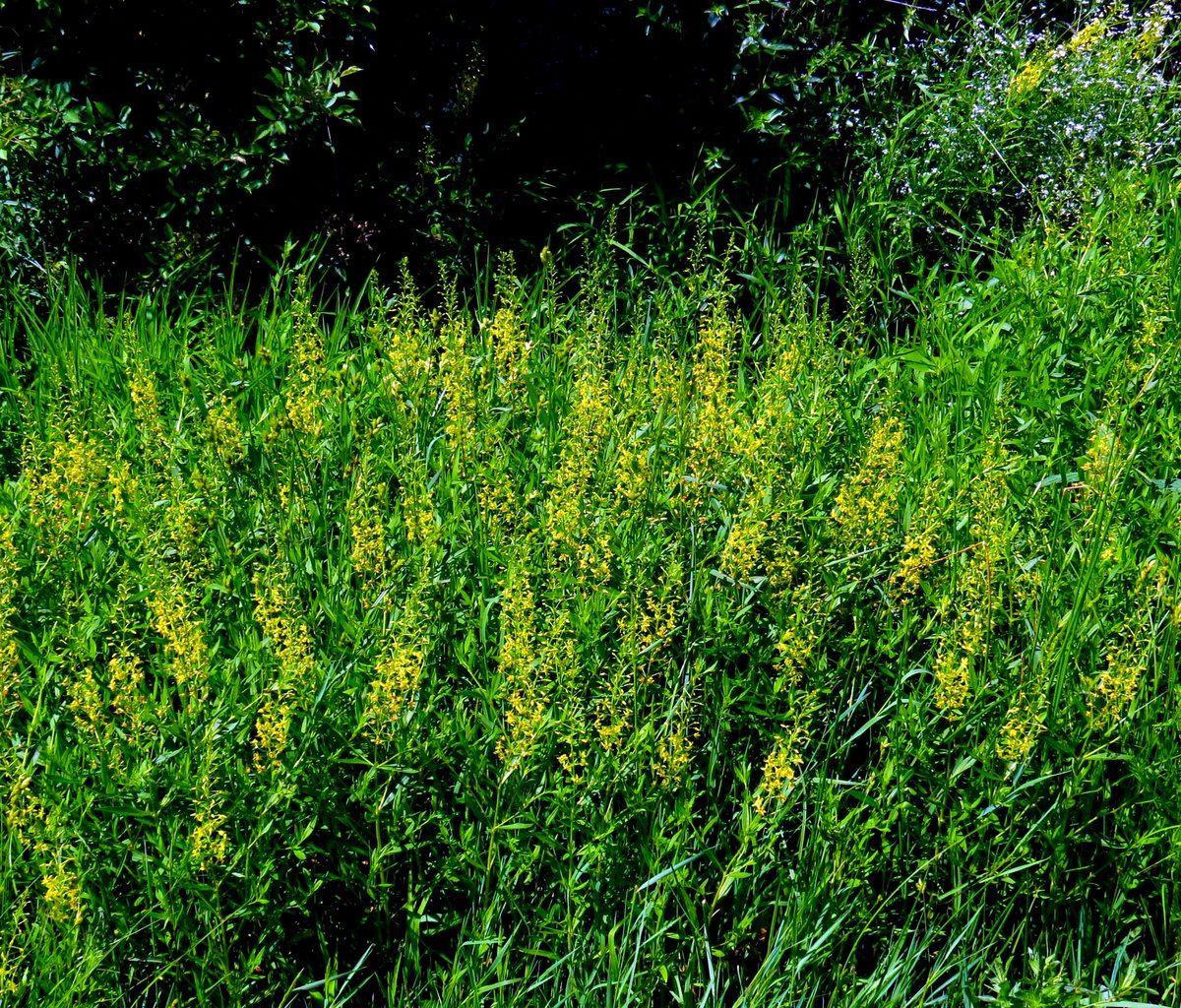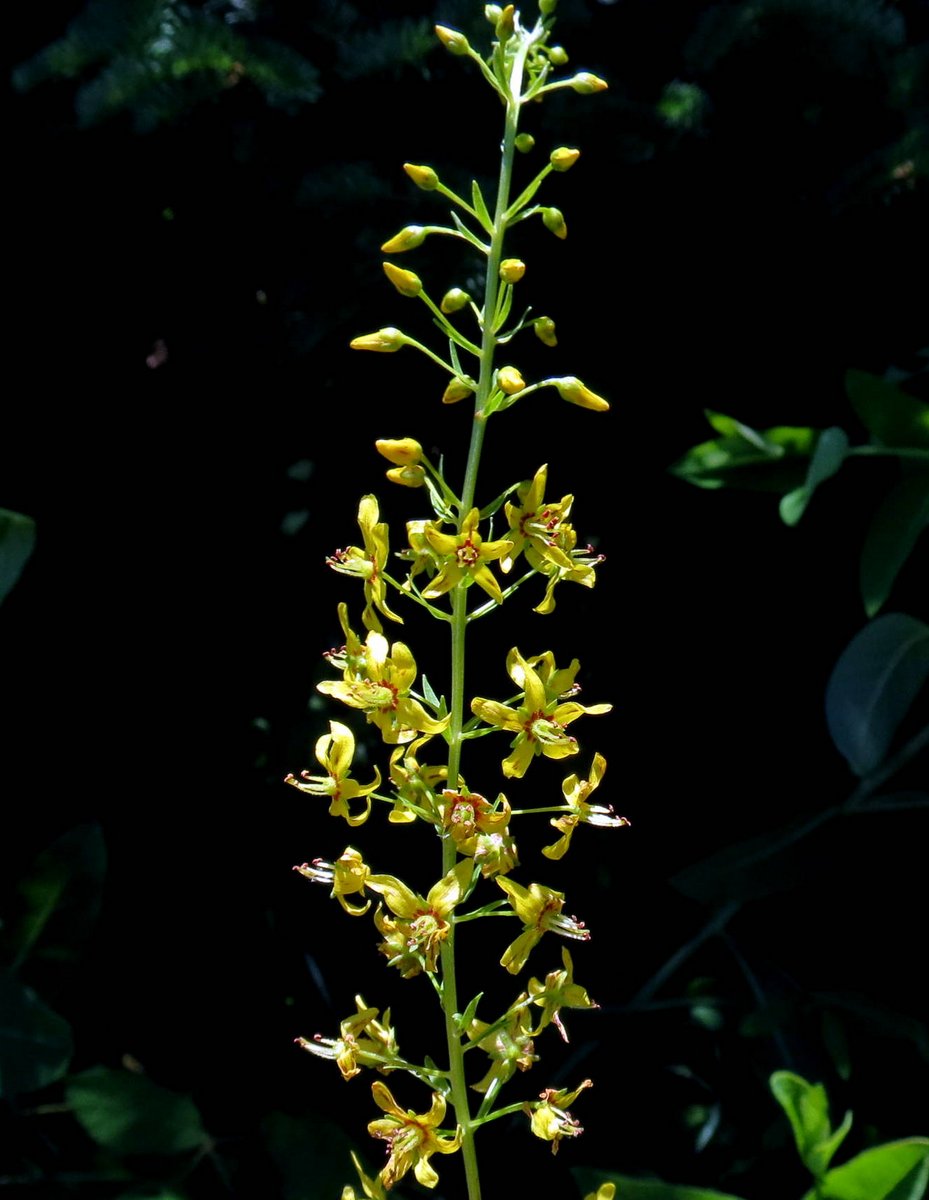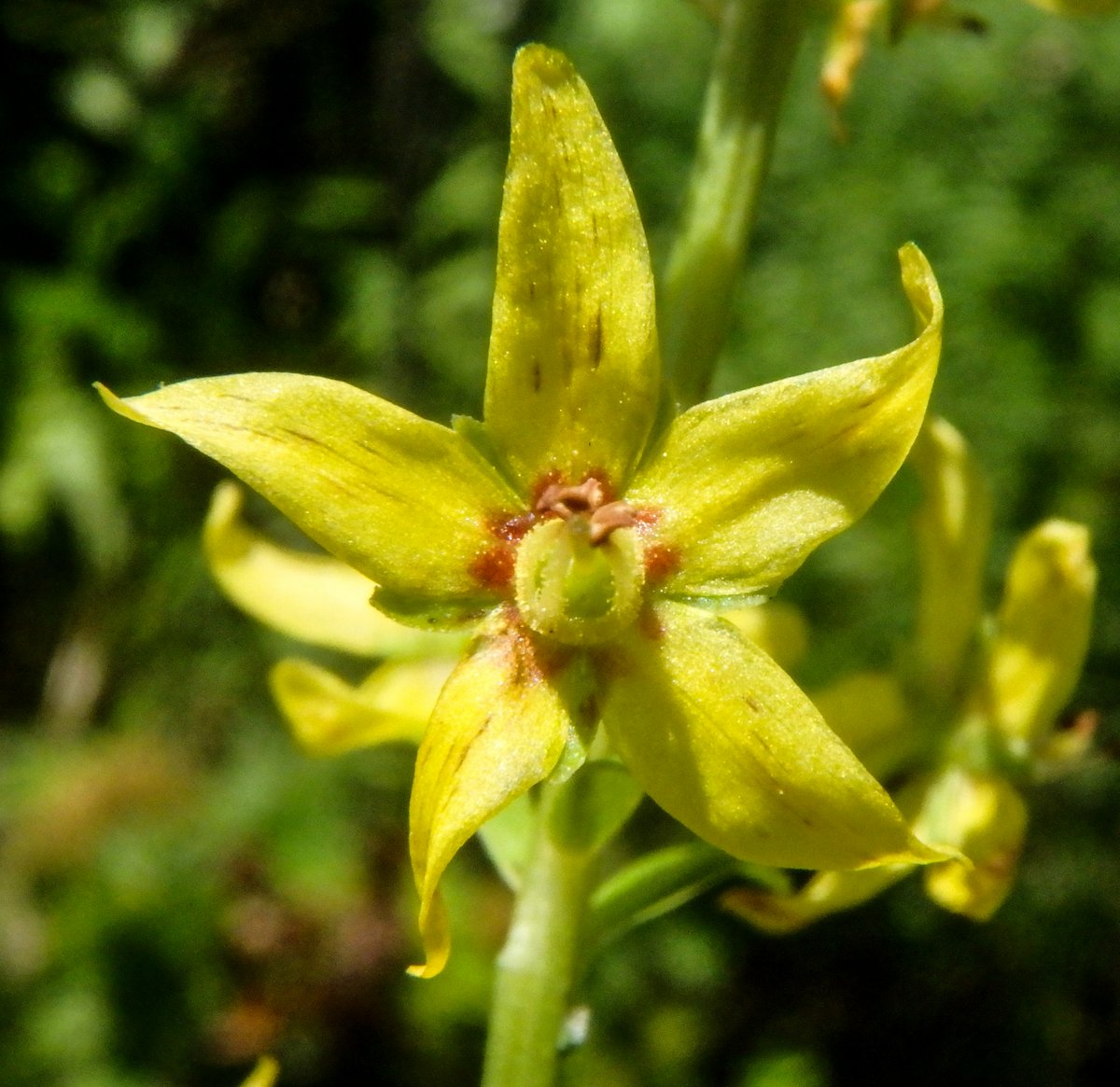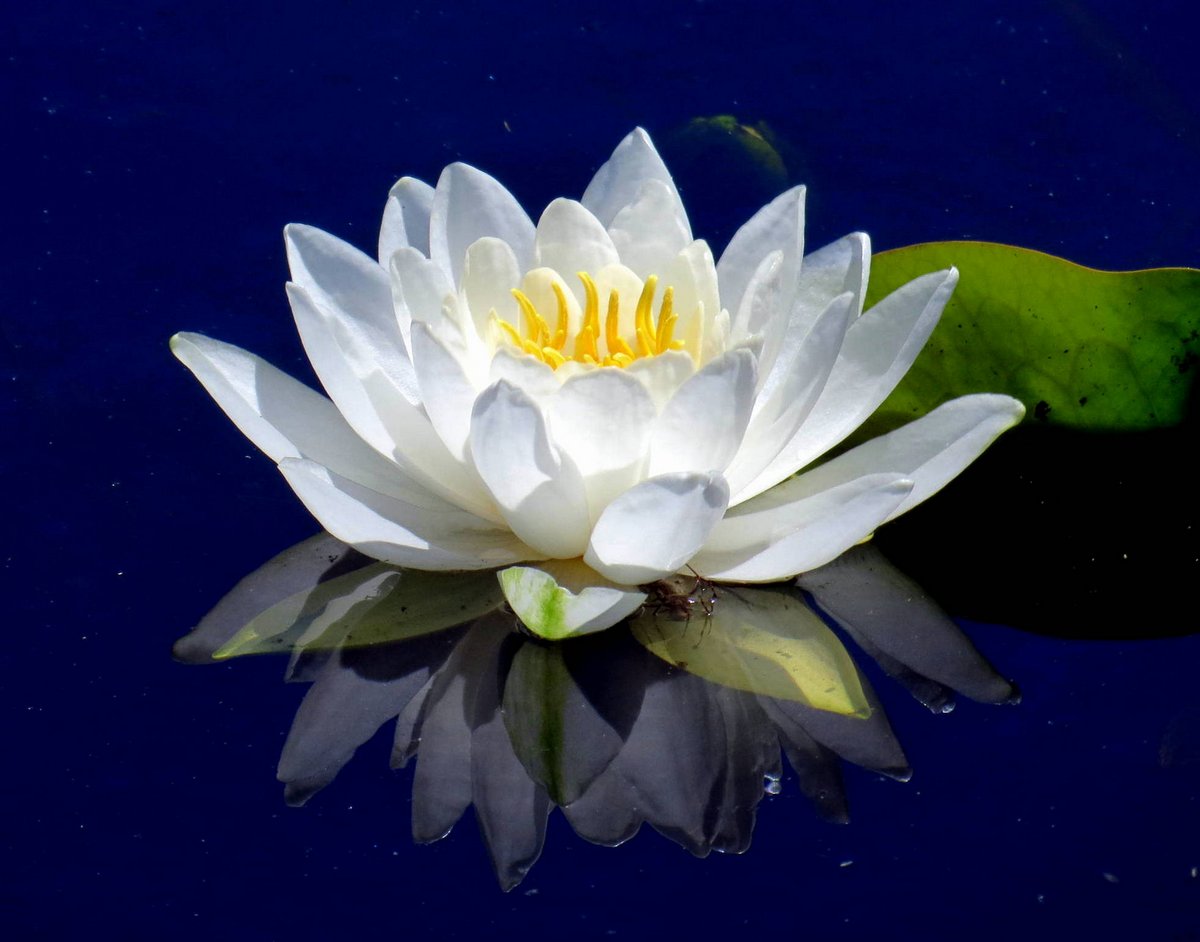
Now that fall is almost here we’re having some summer weather so I’m getting out more. I went to where I used to work in Hancock recently and one of the first things I stopped to admire was this view of Half Moon Pond. For seven years I started each work day standing in this spot, looking out over the pond and drinking in the quiet. Since I grew up awash in quiet that part of the job was a perfect fit from the first day. The experience was a unique one for me though, because working so close to the pond meant I could watch all of its changes as they happend. It reinforced what I’d had an inkling of as a boy growing up along the Ashuelot River; life is a circle and from hour to hour, day to day, and year to year it is in a state of constant change, like a great wheel slowly turning. Following that lead you discover something that is unchanging, and it is found inside us all.

As I was leaving Hancock I saw a small stream with its banks full of flowers of all kinds. There were white asters, pink Joe Pye weed, purple loosestrife, white boneset, and yellow goldenrod growing there. It was a natural garden; a beautiful spot.
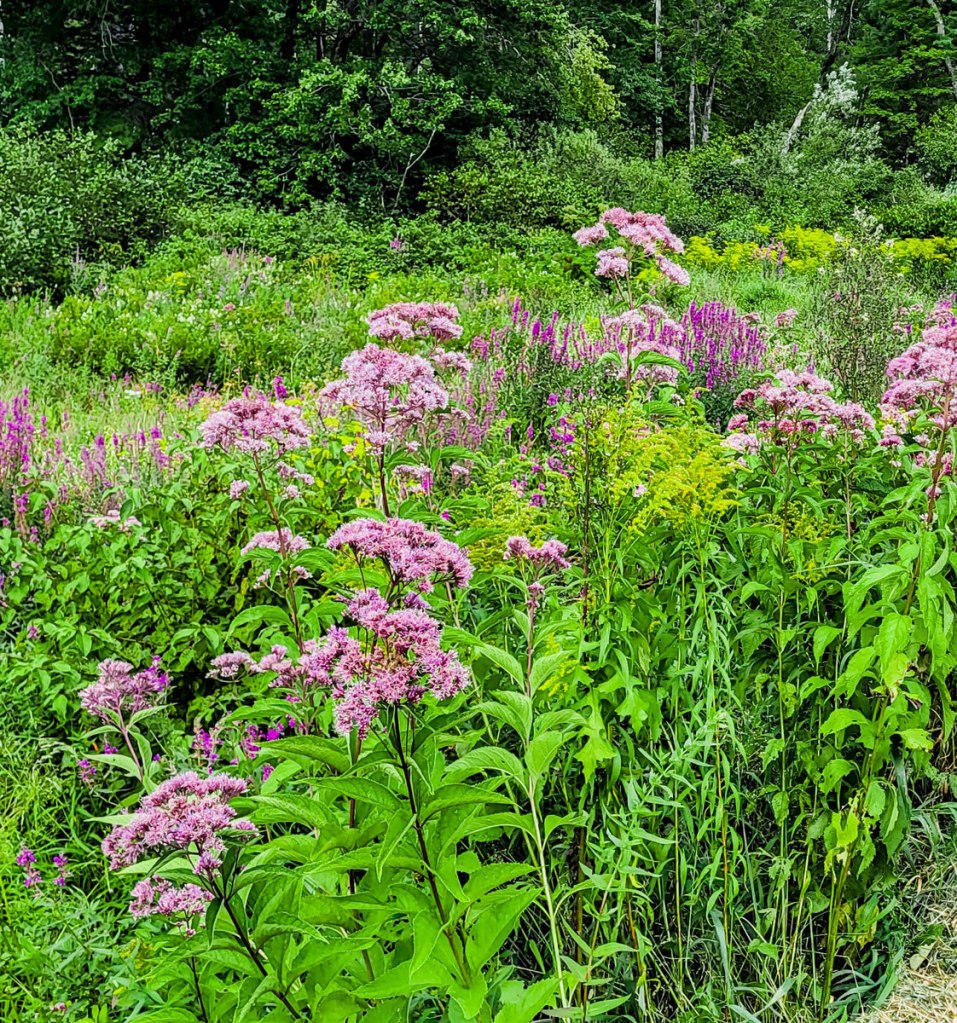
There were flowers everywhere, like a roadside Monet painting. Who needs riches when we have places like this? We are already rich, but most of us don’t see it.

I didn’t see any purple asters there but I am starting to see them in other places.

I’m also starting to see monarch butterflies, but not here in Keene. This one was in Hancock, probing for nutrients in a gravel road. There seem to be few to none in Keene this year.

I also saw a white admiral that day, looking a bit tired. In fact I thought it might have died but it slowly lifted its wings when I moved closer so I knew it was alive. I took a couple of shots and moved away to let it rest.

The clear white flowers of arrowhead have appeared. Each one of these had tiny flea like black insects on it but since they grew just offshore I couldn’t get close enough to see what they were. The centers of the flowers look like little clown noses.

There are plenty of great spangled fritillary butterflies in Keene. They love Joe Pye weed, and we have lots of it.

Great Spangled fritillaries look to be about the same size as monarchs, but I find them to be much more approachable. This one let me get quite close. I thought of trying a shot or two with my phone but I decided I might scare it away.

I was able to get a shot of this one’s eyes but when I got home and saw that they were an orangey-reddish color I was surprised, because I have other shots of them with blue eyes.

In this shot I took on Pitcher Mountain years ago this fritillary butterfly’s eyes are obviously blue. Why would one have blue eyes and the other red? According to Butterflies of the Adirondacks “The Atlantis Fritillary has blue-green or greyish blue eyes, while both the Great Spangled Fritillary and the Aphrodite Fritillary have amber to yellow-green eyes.” So the blue eyed one shown here is an Atlantis fritillary and the other in the previous shot isn’t. I obviously saw amber eyes as red so I’m going to stop there, because according to Butterflies and Moths of North America the other differences between the butterflies are slight, as in shading of certain colors and slight variations in markings. For me it’s their eyes that tell the story so from now on I’ll just look them in the eye, tell them how beautiful they are, and let it be.

I wasn’t going to say anything but I thought you should know. As I’ve said before, fall starts on the forest floor and this hobblebush shows it.

This young white ash tells me that fall is creeping up into the understory.

I stopped at the Ashuelot Falls one evening to see if the light had turned them to gold. It had, but there were other things going on as well.

A heron fished below the falls. It had spotted something and as I watched it caught what I think was a small frog. Down it went with a flip and a gulp. Canon bridge cameras are notoriously inefficient in low light and though the light was really too poor to be taking photos, I tried anyway.

When I saw this over my shoulder I decided to leave the heron to its hunting. It was a good thing too, because as I got to the car those extra-large raindrops that make a loud splat! started falling.

On another evening I tried a blue vervain plant in low light. I loved the way the small blue flowers glowed with a light that was more in them than on them. They were so beautifully blue; truly the center of attention, but though they took center stage it was the light that put them there. Sometimes it is the quality of light more than what it falls on that can stop us in our tracks.

I forgot to look for the flowers of white baneberry this past spring but I remembered to look for the plant’s berries this year. White berries at the ends of pink pedicels are hard to miss. They’re called “doll’s eyes” for obvious reasons and they’re very toxic. They’re also very bitter, which makes it doubtful that anyone would eat enough to be harmed by them. These plants are having a good year.

Tansy is just coming into bloom and before long each flower head, shown as a disc shape in this view, will grow into a fluffy mound of tiny blooms. The aromatic leaves were once used to repel insects like bedbugs, and it was brought to this country by the first settlers for that reason, as well as for its medicinal uses.

Some turtlehead plants are covered in mildew, and that is no surprise considering all the rain and humidity we’re having. In a garden mildew usually means poor air circulation and not enough direct sunlight. Both are conditions that can often be remedied my moving the affected plant or by creating more “breathing” space around it by moving any plants that might be crowding it.

Garden phlox is a plant that is often very susceptible to mildew but I haven’t seen any yet this season. This one was very pretty, I thought.

Here was another pretty phlox that was mildew free. The plant is also called “tall phlox” and many varieties are very fragrant. I think plant breeders have also bred them for mildew resistance over the years.

Pretty little blue toadflax is still blooming and probably will into October. One story says that the “toad” part of the name comes from the way the flower opens like a toad’s mouth when each side is pressed with the fingers. I’ve done this with yellow toadflax and it is true but with the tiny flowers of the blue, I’m not sure. Another story says that toads took refuge among the branches, but I haven’t seen many yellow or blue toadflax with branches.

If I had to offer advice to those who are just starting out in gardening it would be to beware of friends bearing plant gifts. Oh, they mean well enough; they have more of this plant than they can use so they might as well share. Right there is where you should stop and ask yourself why they have so much of this plant. Is it aggressive? Will it take over my garden? If it is an obedient plant the answer to these questions is YES. Obedient plants get their common name from the way the flower stalks stay where they are bent for a short time, so in this way they are “obedient.” The name does not come from the way the plants stay in one place. No, they are a native member of the mint family and they can act just like an invasive and take over a garden. The solution is, if you’re given a plant you don’t know anything about, plant it off by itself somewhere where it can’t overrun other plants. Just let it be and watch it for a year or so, and when you are satisfied that it doesn’t want to rule the world, move it into the garden.

Though the native obedient plant is everything I’ve said above plant breeders have been working on it, and I just read about a cultivar called “Miss manners” which is said to form upright clumps that don’t spread. It sounds truly obedient and would be a great addition to the garden if it was. The snapdragon-like flowers are very beautiful and they attract plenty of bees. Obedient plants grow naturally along riverbanks from Canada South to Virginia and west to Texas, but I’ve never seen one in the wild. Plants I’ve grown in the garden never seemed to need any extra watering as you would expect a riverside plant would.
Every beauty which is seen here by persons of perception resembles more than anything else that celestial source from which we all come. ~Michelangelo
Thanks for coming by.
